














ISSUE#27 FROM SAAS TO SPEEDBOATS... THE BEST STRATEGIES IN A ‘PERMACRISIS’ MORE BOOM! LESS DOOM, Mobiquity ● Auriga ● BBD ● McKinsey ● CBI ● G+D ● Bitstamp ● Vitesse Volante ● Mambu ● HSBC ● Netcetera ● Digiseq ● Tink ● Visa ● Resilience ● FIS Worldpay INSIGHTS FROM THE RULE OF ENGAGEMENT FSCOM ON THE UK’S NEW CONSUMER DUTY LAW BUILDING A BANK FOR SME s MAMBU ASKS: WHAT DO THEY WANT? READY TO PLAY WHY IT’S GAME-ON FOR BARCLAYS CONTINENTAL SHIFT HOW AFRICA FLEXED ITS FINTECH POWER
Experience composable banking with Mambu's SaaS cloud banking platform.
Learn more
FINTECH FOCUS
32 Wake-up calls
Mobiquity’s VP of global digital banking Peter-Jan Van de Venn and the fintech futurist and author Brett King explore where banks should focus their IT investment in an uncertain year
40
Beating the digital drum
African fintechs are ‘doing it for themselves’. We asked three leading members of its fintech ecosystem –Matthew Barnard, Gwera Kiwana and Matteo Rizzi – what that means for them… and the rest of the world

64 Game-on!
Elaine Dowman explains why Barclays is banking on the UK’s video game industry
OPEN FINANCE
6
Unlocking the new economy
With their customers facing, not one but two, existential threats, banks need to seize the open banking moment and drive real change in 2023, says Tink’s Tasha Chouhan
11 A slice of the action
As European regulators begin shaping a new era of API-driven open finance, Italy’s CBI is already positioning itself and its clients to reap the benefits. Head of Banking and Financial Market, Alessio Castelli, outlines the menu of options
PAYMENTS

14 Short cuts, fast growth
The Visa B2B Connect network for high-value business payments is making good on its promise to shake up correspondent banking, says Ben Ellis, SVP and Global Head of Visa B2B Connect at Visa Business Solutions



THEFINTECHVIEW

It was John F. Kennedy who pointed out that, when written in Chinese, the word crisis is composed of two characters – one that represents danger, and the other opportunity.
Logically, then – since we are now in an era of permanent crisis, according to lexicogaphers at Collins, who made permacrisis their fave word at the end of 2022 – we are also in an era of heightened opportunity.
That’s not the impression one gets from the drip, drip of depressing headlines, announcing another staff layoff, down-valuation or VCs snapping the wallet shut (with perhaps the noble exception of fintech champion Sequoia Capital, which poured money into 100 of them last year). In uncharacteristically downbeat mood, finfluencer Leda Glyptis even describes the outlook for H1 2023 as ‘grim’ on page 74.
The macroeconomic environment affecting FSPs – and both their retail and business customers – combined with an even more active regulatory one (check out the FSCom discussion on page 44), is making life more difficult than usual. No one in this issue is pretending otherwise.
ISSUE #27 | 2023
The danger is that the cautious will stop investing in innovation at just the moment when they must hold their nerve – or lose out to more opportunistic businesses… At least, that’s the situation in the Global North. There, many now mature fintechs grew up in a time of plenty, have no experience of recession and are having to come to terms with leaner models and nervous investors.
Look across the world to Africa (page 40), though, and you’ll find a different and much more positive outlook. They’re no longer looking to the Global North for inspiration nor investment – and are even exporting solutions that can teach the rest of the world a thing or two about delivering what customers really want with minimum resources.
The good news is that Leda cheers up in H2 2023. So, if you’re reading this at Finnovate Europe on March 15, look on this Ides of March not as a day doom, but as a signpost to impending opportunity. Our last issue’s spine tingler, “Perhaps we make too much of what is wrong and too little of what is right”, was a quote from HRH
Queen
Elizabeth II Sue Scott, Editor
CONTENTS
Issue 27 | TheFintechMagazine 3 40 64
19 No time like the real-time
The US payments landscape is being driven by a unique set of circumstances that will have deep and lasting impact on how business gets done. Volante’s Rachel Hunt says banks must move fast – in more ways than one
22 A token of our esteem
Are we falling out of love with cards?
If anything, our relationship is proving remarkably resilient, agree Alex Page from FIS Worldpay, G+D’s Alex Gatiragas and Kurt Schmid from Netcetera. Here, they discuss how tokenisation, click-to-pay and secure customer authentication are all helping to keep the spark alive
26 Mission critical
Payments provider Vitesse is helping a new wave of parametric insurers deliver funds where they’re needed, when they’re needed
30 Getting closer
Terrie Smith, Co-founder and Global Ambassador at wearable tech pioneer DIGISEQ, on why issuers should open their eyes to a new dawn in wearable payments
PARTNERSHIPS

36 Piloting bigger banks to safety
Kunal Galav from Mambu, and McKinsey analyst Henning Soller discuss how incumbents mired in complexity can compete in shifting seas
SECURITY & COMPLIANCE

44 Prepare for scrutiny
fscom’s recent Regulatory Outlook 2023 event covered a wide variety of issues impacting financial services companies in the UK and the FCA’s evolving approach
49 Ground zero ATMs and assisted self-service machines are vulnerable assets, says Juan Ramon Aramendia, Head of Cybersecurity Product Engineering at Auriga. But there is a solution
HOW TO BUILD A BANK
52 Winning the hearts, minds and finances of SMEs
Mambu and friends look at the state of banking for the majority of the world’s businesses and finds them hungry for better support

ARTIFICIAL INTELLIGENCE
58 Where were you fintech?
Stuart Thompson roams the aisles of the world’s biggest consumer electronics show in search of an industry that really should be taking notice
61 Truth, accuracy and AI
HSBC’s Ash Booth on the possibilities and perils in a new generation of generative artificial intelligence
ALTERNATIVE ASSETS
67 Alternative realities Ron Delnevo asks if central bank digital currencies are less about fending oºff competition from cryptos and more about advancing a political – and cashless – agenda

70 The knowledge exchange
In a tumultuous year for the crypto industry, Bitstamp set out to restore faith by tackling the biggest obstacle to adoption… ignorance
LAST WORDS
74 How will 2023 unfold?
Predictions from Ram Gopal, Leda Glyptis, Brett King, Tom Eggleston and Igor Tomych
4
THE GOOD SHIP BANKING THE GOOD SHIP BANKING
CONTENTS 52 36
CHALLENGER CHALLENGER
67
TheFintechMagazine | Issue 27 ffnews.com All Rights reserved. No part of this publication may be reproduced, stored in a retrieval system or transmitted in any form or by any means, electronic, photocopying or otherwise, without prior permission of the publisher and copyright owner. While every effort has been made to ensure the accuracy of the information in this publication, the publisher accepts no responsibility for errors or omissions. The products and services advertised are those of individual authors and are not necessarily endorsed by or connected with the publisher. The opinions expressed in the articles within this publication are those of individual authors and not necessarily those of the publisher. EXECUTIVE EDITOR Ali Paterson GENERAL MANAGER Chloe Butler EDITOR Sue Scott PRODUCTION Taylor Griffin HEAD OF CONTENT Douglas Mackenzie HEAD OF MARKETING Ben McKenna CONTACT US ffnews.com DESIGN & PRODUCTION www.yorkshire creativemedia.co.uk ART DIRECTOR Chris Swales PHOTOGRAPHER Jordan “Dusty” Drew ONLINE EDITOR Lauren Towner ONLINE TEAM Joshua Hackett FEATURE WRITERS David Firth l Tracy Fletcher Tim Goodfellow Martin Heminway Natalie Marchant Martin Morris l John Reynolds James Tall l Frank Tennyson Stuart Thomas l Sue Scott Fintech Finance is published by ADVERTAINMENT MEDIA LTD. Pantiles Chambers 85 High Street Tunbridge Wells, TN1 1XP ACCOUNTS TEAM Jacob Bruce Tom Dickinson Nicole Efthymiou Emillie Snelgrove VIDEO TEAM Lewis Averillo-Singh Alexander Craddock Max Burton IMAGES BY www.istock.com PRINTED BY Print it 24 seven "PROUDLY NOT ABC AUDITED" THEFINTECHMAGAZINE 2023 ISSUE #27

the new economy Unlocking
the globe, from droughts and wildfires to devastating floods.
Those twin fears – around the rising cost of living and the impacts of climate change – are challenging consumers across Europe and beyond, according to Tasha Chouhan, UK and Ireland banking and lending director at Tink, Europe’s biggest open banking platform.

The world is caught between a rock and a hard place. Facing a global economic slowdown as well as rapidly accelerating climate change, we need to alter the way we think and act to avoid worsening the situation further.
Largely in response to the soaring energy prices that were driving inflation, central banks in the US, UK and Europe have raised base rates multiple times in less than a year. In the UK, higher repayments are contributing to an overall 12 per cent cut in real incomes for a typical mortgaged household between 2020 and 2024, the think tank the Resolution Foundation forecasts.
Meanwhile, in January 2023, winter climate records were smashed across many countries in Europe, with Bilbao in Spain seeing temperatures reach summer levels of 25°C. At the same time, parts of North America suffered one of the coldest snaps ever recorded with historic snowfalls. The year also saw a host of climate-related catastrophes across
Chouhan highlights this as a tipping point at which Tink is ready to step in.
Open banking empowers banks and financial service providers to help consumers adapt to ever-changing economic and environmental conditions.
To do this, Tink is focussing on three areas of development: lending, payments and personalised banking services – including sustainability tools.

Tink’s September 2022 report, Lending Unlocked: A New Era Of Credit, for which pollsters YouGov spoke to 380 financial executives across Europe, revealed that 58 per cent of lenders had tightened their consumer lending criteria, including for mortgages, while 54 per cent are more careful when considering business loans.
“Forcefully restricting lines of credit will have a further negative impact on an already turbulent economy,” the report points out. “While it’s vital to protect vulnerable consumers from taking out loans they can’t afford, it’s of equal importance that those who can afford them are given a fair assessment. This means using the best tools available to
prevent anyone from financial trouble, either by borrowing more than they can afford or being forced to turn to less mainstream – and less regulated – forms of credit.”
Tink believes that using open banking to provide information about credit applicants’ financial circumstances will have a transformative impact for both consumers and lenders.
“From this report, we’ve been able to understand there are a number of key factors that are really driving the need for change in the current economic climate – the cost-of-living crisis that everybody’s feeling in Europe, but particularly in the UK,” says Chouhan. “The rise of inflation and the mortgage crisis, also in the UK, really show the need for more investment into the lending models that we have.
“Some of the lending models available today don’t take into account the fact that applicants’ circumstances are changing on an ongoing basis. Accurate and up-to-date information is needed for decisionmaking, and this is something that the traditional manual processes don’t always offer today.
“We’re looking at how open banking and real-time information can improve risk profiling. How a credit applicant’s transaction history, with real-time insights into their incomings and outgoings, can help lenders assess their affordability and creditworthiness.”
Tink’s own research underlines the vast
6 OPEN BANKING: EMPOWERING CUSTOMERS
TheFintechMagazine | Issue 27 ffnews.com
With their customers facing not one but two existential threats, banks need to seize the open banking moment and drive real change in 2023, says Tink’s Tasha Chouhan
Tink-ing outside the box: Open banking data helps address more than one pressing issue

potential offered by open banking and establishes a clear need for its services among lenders.
When asked what the most common reasons for being unable to assess applicants’ creditworthiness were,
responses ranged from the biggest barrier being ‘unable to verify assets or collateral’ (31.8 per cent), to being ‘unable to access payment history’ (23.7 per cent).
In addition, half of lenders are still not using data-driven technology to generate a credit score for loan applicants, while more than a third (35 per cent) are not using bank account data to get a clear picture of an applicant’s expenses and their overall affordability for a loan.
That said, many of the respondents indicated they were planning to use open banking to improve those stats. So far, the main obstacle for lenders has been the inability to evaluate applicants in real time – without impacting conversion rates by adding too much friction.
7
ffnews.com Issue 27 | TheFintechMagazine
Some of the lending models available today don’t take into account the fact that applicants’ positions are changing on an ongoing basis. Accurate and up-to-date information is needed for decisionmaking, and this is something that the traditional manual processes don’t always offer today
“With the economic crisis showing no sign of slowing, better decisions on lending are needed to protect and support consumers and businesses who might be struggling with affordability in the year ahead,” says Chouhan. “The good news is that there is a growing appetite to embrace open banking-powered technologies, with 41 per cent of lenders planning to adopt digital solutions for data-driven credit scoring.
“Traditional credit checks are often limited, requiring a lot of manual input from both the applicant and the lender. This often leads to an outdated view of their creditworthiness.”
Tink is extending its partnerships with fintechs to layer on additional services for its banks’ customers.

One of these fintechs is the technology platform Youtility, which provides UK retail banks with embedded subscription and money management tools. Through up-to-date transaction data, the app allows customers to set budgeting goals and achieve savings on household bills, such as energy, broadband, phones and TV subscription services.
“Providing proactive money management insights – through data that shows consumers where their money is going and how they can save – demonstrates the real-world value of open banking,” explains Chouhan. “In helping consumers navigate the very serious challenges presented by the cost-of-living crisis, our collaboration is showcasing the significant benefits that open banking technology has enabled.”
Of course, when it comes to climate change, the world faces a far harder and longer journey, but financial prudence during a cost-of-living crisis could have a positive impact on the planet, too. A better understanding of a household’s energy costs and how to reduce them, would, for example, lower emissions. And Tink’s research shows a growing demand among customers for tools that enable them to do their bit.
“A clear majority (62 per cent) of 18 to 34-year-olds want more information about their carbon footprint, and more than half expect their financial services provider to do more to help them reduce it,” says Chouhan, quoting from research commissioned in early 2022 during which Tink surveyed 2,000 UK consumers, asking them about the importance of cutting their own carbon footprint.
fail to give full, transparent visibility over their environmental impact and carbon footprint may be at risk of alienating a key segment of their customers.”
It’s a warning that Tink, itself, is pushing hard to address, again by forging alliances with banks and fintechs. For instance, it has teamed up with sustainability-as-a-service provider Ecolytiq, to use open banking data to allow customers to have a deeper understanding of how consumption habits impact the environment, empowering them to make climate-positive changes.
Berlin-based Ecolytiq is also part of the Visa Fintech Partner Connect Programme where, for example, in Canada it is linking with co-op credit union Vancity to create a banking web application called Carbon Counter. It allows every Vancity Visa credit cardholder to be able to track the estimated carbon emissions of their credit card purchases.
Chouhan emphasises that Tink is committed to enabling services that can help people both better manage their money and to safeguard the planet.
“Tink’s Money Manager technology is designed to help banks deliver tools that help people improve their finances by creating personalised insights with seamless actions that drive meaningful change,” she says.
“Nearly half (43 per cent) said they would switch to a new financial provider which allowed them to see the environmental impact of their purchases. As the climate crisis worsens, it’s clear that consumer expectations for financial institutions are rising. Banks that
“Both the climate crisis and rising cost of living are defining issues for consumers, which is why we are building an ecosystem of partnerships, including Youtility and Ecolytiq, to provide the clarity needed for people to make meaningful decisions on how they manage their finances and reduce their footprint.”

OPEN BANKING: EMPOWERING CUSTOMERS 8 The ffnews.com
Driving green behaviours: Open banking can help address customers’ environmental concerns
As the climate crisis worsens, it’s clear that expectations of financial institutions are rising. Banks that fail to give full visibility over environmental impact risk alienating a key segment of their customers


Keep your digital banking experience relevant for your customers
Customers’ expectations are changing and they are demanding more from banks than ever before. Discover what is globally available in digital banking app features and how to stand out from competition while delighting your customers with a frictionless digital banking experience.

Mobiquity helps clients to create and deliver customer-centric digital products, that maximise revenue and orchestrate effortless digital banking user experiences.


Set your bank apart from the competition!
www.mobiquity.com
M Stand out in a crowded marketplace
M Adopt latest technologies and innovations
M Enhance your customers banking experience
M Maximise revenue
INTERACTIVE GLOBAL BANKING FEATURES RADAR OPEN ACCOUNT MANAGEACCOUNT MANAGE FINANCES SAVEMONEY INVEST MONEY PAYOTHERPEOPLE GET PAID LOANMONEY C TCENNO & TCAPMI SGNIHTYUB & YAP B I L L S DIFFERENTIATORS DELIGHTERS MUSTS MUSTS DELIGHTERS DIFFERENTIATORS
DOWNLOAD RADAR
A slice of the action
If you imagine the EU’s second Payment Services Directive (PSD2) as a simple-but-classic margherita pizza, could the next iteration be a meat-feast-stuffed crust of possibilities beyond payments?
The Italian payment providers’ community and infrastructure provider CBI is preparing for just such a future, and is determined to guarantee itself and its clients a significant slice of it.

It has seen API adoption and traffic across its CBI Globe open banking platform explode since PSD2 came into full effect in 2019, thanks to the directive’s success in boosting innovation by opening up the payments market to new entrants.
While it introduced the concept of open banking, it limited data sharing to payments information. Now, the EU is actively considering the introduction of a ‘PSD3’ to create truly open finance.
To pave the way, the Commission carried out an open finance framework consultation last summer, and is gearing up to present a legislative proposal for an open finance framework in Q2 of 2023 for an update/review of the PSD2. Similarly, CBI will make a case for the introduction of open finance in its Global Finance Report, which will be released on 23 March.
Head of banking and financial market, Alessio Castelli, says: “The report will look

at the evolution of open banking and open finance over the last two years, and present the best-in-class use cases, new companies and innovations developed by financial institutions, in Italy and across Europe, showing triple-digit growth in open banking services.”
Whatever PSD3 looks like, it is widely acknowledged that regulators will need to ensure any new rules provide a level playing field for incumbents, neos and fintechs alike, while protecting customers through better supervision.
Castelli explains: “Open finance is a new paradigm within the finance landscape, an evolution of open banking aiming to allow end-users, corporate and retail, to utilise innovative services that better meet their needs through functionalities with wider scope than typical banking products, like personal financial management or wealth management.
“It also gives financial companies the opportunity for new commercial strategies, with upselling and cross-selling opportunities utilising financial data.”
Castelli says several factors are driving the open finance uptake, which is contributing to such hockey-stick growth.
“The first element of open finance is regulatory, where market players must respect the mandatory rules defined by the authorities, as in Europe with PSD2 forcing traditional banks to open their systems to third parties,” he explains.
“The second is market-driven, where players drive different behaviours among end-users by selling new products offering great user experience and wide interoperability,” he adds.
The European Commission’s efforts to facilitate open finance include its 2020 Digital Finance Package aimed at boosting market competitiveness for operators within the European Economic Area by prioritising digitisation in finance.
“In Italy, we also have the national competent authority, the Bank of Italy, which is offering support to market innovators through channels including Milano Hub and the Regulatory Sandbox,” adds Castelli. But regulation must be balanced with freedom to innovate, to realise the full potential.
“Market operators need to understand the rules well, while regulators need to understand the market’s needs and how the technologies are being produced,” he says.
“CBI was selected, a few months ago, to join the Bank of Italy’s regulatory sandbox, initiated by the Italian Ministry of Finance, with a project called Invoice Control Database, which aims to become a central solution in Italy for invoice financing security.
“This is a huge opportunity for us, and the Italian market, to show all innovators how it’s possible to have strong conversations with our national competent authorities.”
Democratising finance: PSD2 allowed open banking to flourish
11 OPEN FINANCE: EUROPE
ffnews.com Issue 27 | TheFintechMagazine
As European regulators begin shaping a new era of API-driven open finance, Italy’s CBI is already positioning itself and its clients to reap the benefits. Head of Banking and Financial Market, Alessio Castelli, outlines the menu of options
In many ways, then, the move towards open finance is transforming the world of finance into the kind of collaborative ecosystem where players can contribute their specialist offerings to what becomes a layered solution. And third-party providers are becoming increasingly critical to making this happen.
Castelli says: “CBI could be seen as an industry utility, helping financial institutions, European payment service providers, corporates, fintechs, IT providers, and public administrations to respond more promptly and effectively to market challenges in the digital payments landscape.
“We develop frameworks, technical guidelines and collaborative infrastructure around digital services, to help companies innovate from a B2B2C perspective.”
And it is having to adapt fast to ensure its place at the table, particularly given current macroeconomic challenges and business behaviour, including operating beyond its own borders.
“CBI has to embrace new business models and collaborate more to increase its competitiveness,” continues Castelli.
“Our main accomplishment has been creating a strong ecosystem of innovative players, collaborating to develop new services on a new technical platform. We’re also working hard to define technical and implementation guidelines, to allow wide interoperability.
“We are also developing and offering microservices, mostly through REST API technologies which can be easily integrated with wider products or processes, allowing them to offer new functionalities with low effort and good time-to-market.”

With this ready-built ecosystem facilitating API connections between banks – both challengers and incumbents – and third-party providers, inside and outside Italy, CBI stands ready to extend its community. It aims to capitalise on the effect PSD2 has had so far in opening up the market, and has the appetite to do more.
Castelli adds: “Our Italian activities are focussed on the payment industry, and we have a strong role in supporting the companies involved, but we’re also being challenged to support businesses across Europe, and attracting interest from companies all over the world, including the United States.
“This is why we’re involved in developing new services like Name Check,
a confirmation of payee (CoP) service, which will be widely adopted in the next few years,” says Castelli.
“This is in addition to our Invoice Control Database, and we’re also drafting the new generation of corporate banking in Italy. And we also have an active role in the European working groups, shaping the future of open finance, through innovative use cases and digital services.”
More than 80 per cent of the Italian banking industry uses CBI‘s Globe platform, and 200-plus payment service providers have processed over 300 million API calls through it.
Some 10 million citizens have used its CBILL service to pay 200 million bills and pagoPA payment notices, while its open finance ecosystem reaches ‘100 per cent of domestic current accounts and leading international platforms’.
on the success of PSD2 was initiated by financial services commissioner in May 2022. The commissioner wants to determine if the directive is achieving its objectives of opening up banking by forcing banks to allow their competitors access to customer data, reducing fraud with the introduction of new security measures, and cutting card transaction fees through a ban on additional surcharges for debit and credit card payments.
Hundreds of trade associations, businesses and individuals have so far responded, including the European Banking Authority (EBA), which said the benefits of PSD2 are starting to materialise, writing in its submission that ‘the security requirements – in particular, SCA – are having the desired effect of reducing fraud’, with instances three times higher for payments authenticated without SCA.
Notwithstanding any teething problems that may have occurred, it’s widely recognised that PSD2 heralded a payments revolution. It increased competition and innovation in payments, and more than 2,700 new payment and electronic money institutions have been registered since it came into effect.
The EBA has acknowledged that any future iteration should encompass pensions, insurance and investments.
It also supports 400 payment service providers; around three million Italian companies use its payment processing standards and ‘seven central public administrations have simplified access to the Italian financial industry.‘
A PAYMENTS REVOLUTION
CBI’s involvement in the national regulatory sandbox aims to eradicate the risk and cost associated with fraudulent invoices in the B2B2B space. Selected intermediaries and other third parties are also involved in the operational workflow, which is open to welcome new players.
They are carrying out various operations in real time to see how these could be protected against mistakes and fraud, through REST API interfaces, with data flows protected by advanced encryption and using CBI’s technologies to create a centralised database of information related to advanced bills, from a multi-bank and multi-channel perspective.
Ahead of its successor’s introduction, a 12-month, industry-wide EU consultation
So, what finance functions have made up the largest proportion of CBI’s increase in API numbers over the past two years?
“Our analysis showed a 35 per cent year-on-year increase in the number of APIs offered by fintechs, the majority with commercial rather than mandatory applications,” says Castelli. “Ninety-five per cent of APIs have informative functionalities like account aggregation, with the other five per cent addressing payment initiations.
“And these APIs, of course, could be integrated within other fintech applications – for instance, personal financial management and savings management.”
The report highlights a 93 per cent growth in the number of third-party providers operating within SEPA and a 130 per cent API growth in the last few months, with a strong increase in the adoption of the informative services.
“So we are working on all these activities,” says Castelli, “to offer to our clients the best solution, the highest interoperability, and the best user experience.”
12 OPEN FINANCE: EUROPE TheFintechMagazine | Issue 27 ffnews.com
Our main accomplishment has been creating a strong ecosystem of innovative players, collaborating to develop new services on a common technical platform
Securing Everyday Digital Payments
Giesecke+Devrient’s future-proofed payment technology is securing billions of people on a daily basis globally: Our tokenized payment solutions are repeatedly awarded as best-in-class, and our worldwide customer base of renowned brands leverage on our proven track-record in securing everyday digital payments.
With our secure digital payment solutions you will enjoy increased customer satisfaction thanks to frictionless payments – ready for you to customize and gain competitive advantages.

Digital Payments your Customers will Love! #futurebanking
Follow us on:


14 PAYMENTS: INFRASTRUCTURE SHORT CUTS FAST GROWTH TheFintechMagazine | Issue 27 ffnews.com Now entering its fourth year, the Visa B2B Connect network for high-value business payments is making good on its promise to shake up correspondent banking, says Ben Ellis, SVP and Global Head of Visa B2B Connect at Visa Business Solutions
Disrupting the 130-year-old correspondent banking network, to which more than $100trillion in global cross-border B2B payments are entrusted each year, is a monumental task.
And even a world leader in digital payments like Visa doesn’t expect to displace the complex relationships that have built up between correspondents overnight. However, there’s a ‘$10 trillion opportunity’ in cross-border transactions to compete for by using an alternative network, as Visa’s Executive Chairman Al Kelly described it.
That service is Visa B2B Connect, a bank-to-bank money movement network for high-value, cross-border transfers. It forms a key part of the company’s
points for a long period of time,” he says. “We know this because we’ve done the surveys, we’ve talked to the banks and the corporates, and we’ve asked them ‘what are the challenges?’.”
Solutions to those challenges – for high-value payments at least – have not been as easy to find as those that address the lower-value B2B and consumer markets.

“Because, if you’re going to solve it,” says Ellis, “what it takes is a company that knows how to build and operate a network at scale – from a technology perspective, from a rules and regulation perspective, from a compliance and security perspective and from the perspective of how you service a large number of financial institutions in the right way.
“That’s what Visa does and has been doing for decades in our traditional business.”

The service was informed by a survey conducted for Visa in 2019 that showed nearly 70 per cent of corporates across 20 countries had experienced systemic issues in cross-border payments, ranging from speed to cost and visibility into the transaction journey, as well as limited ability to send information alongside the payment to assist with reconciliation.
The aim with Visa B2B Connect was to dramatically simplify the journey by facilitating transactions between the bank
financial institutions with a faster (within the same business day, depending on when the payment is sent), cheaper and fully transparent cross-border payments experience for the user. Last year, for example, the network added banks in Tanzania, Uganda and Angola.
“The quest to deliver fast global business transfers is taking on greater precedence, with clients eager to adopt more visible and efficient payment processes,” says Ellis. “What banks are getting by using Visa B2B Connect is the trusted expertise and capabilities that help enhance the payments experience for their customers: innovation at a global scale from one of the most trusted brands is a true differentiator.”
One of the advantages of Visa B2B Connect for banks is that it gives them a set of options, says Ellis. As the world recovers from the 30 per cent slump in global trade that put a dampener on international B2B transaction flows following the pandemic, anything Visa B2B Connect can do to facilitate global trade by giving banks and corporates a fast-track to growth, it will, says Ellis.
“We’re seeing more and more businesses increasingly operate across borders, and the rise of B2B e-commerce and online marketplaces is driving
‘network of networks’ strategy. Visa B2B Connect is another way to grow out a robust Visa infrastructure, which adds more endpoints and attracts more clients.
There is no doubt that there is demand among financial institutions and their corporate customers for such an alternative to traditional correspondent banking corridors, according to Ben Ellis, SVP and global head of Visa B2B Connect at Visa Business Solutions.
“Cross-border payments for businesses paying other businesses has been an issue with a lot of pain
of origin, directly to the beneficiary bank with no stops in between.
“So, we built a multilateral banking network for high-value B2B payments where banks can sign on to the network and send directly through Visa B2B Connect, to anyone else on that network,” explains Ellis. “You can deliver payments with full value, full predictability, and full knowledge of what the fees and costs are going to be.”
Visa B2B Connect is currently available in more than 100 countries and territories where it’s accessed by more than 60
more cross-border transactions,” he says.
“But several factors complicate cross-border commercial payments –payment infrastructures vary by country; the landscape of regulations governing cross-border transactions is fragmented by geography; providers are plagued by complex internal business processes and operations… the list goes on.
“Visa is committed to helping merchants, fintech clients, corporate partners and individuals alike move money around the world, and at scale.”
15 ffnews.com Issue 27 | TheFintechMagazine
Several factors complicate cross-border commercial payments – payment infrastructures vary by country; regulations governing cross-border transactions are fragmented by geography; providers are plagued by complex internal business processes and operations… the list goes on


parisfintechforum.com EARLY BIRD 20% OFF until 31/03/2023 PARIS ∞ NETWORKING 10 0 SPEAKERS 50 0 PARTICIPANTS 40 COUNTRIES PARIS ∞ NETWORKING 10 0 SPEAKERS 50 0 PARTICIPANTS 40 COUNTRIES PARIS ∞ NETWORKING 10 0 SPEAKERS 50 0 PARTICIPANTS 40 COUNTRIES PARIS ∞ NETWORKING 10 0 SPEAKERS 50 0 PARTICIPANTS 40 COUNTRIES PARIS ∞ NETWORKING 10 0 SPEAKERS 50 0 PARTICIPANTS 40 COUNTRIES
THEY WILL BE ON STAGE


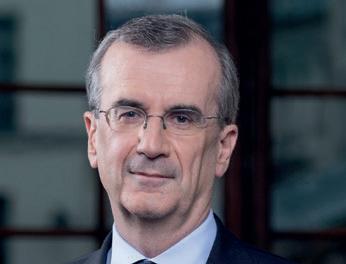


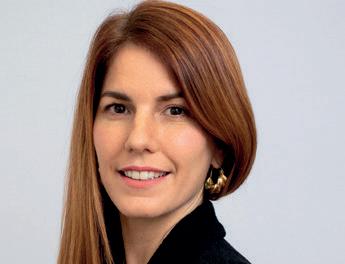
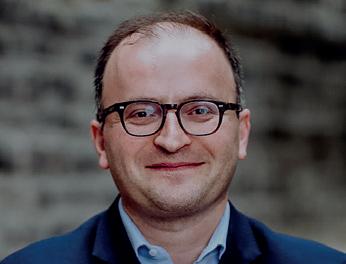




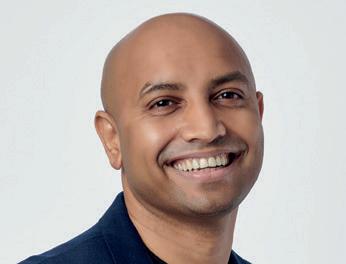
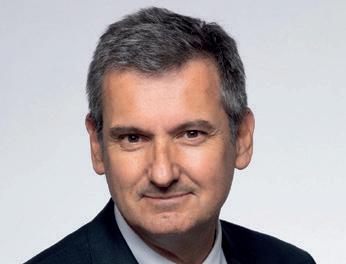

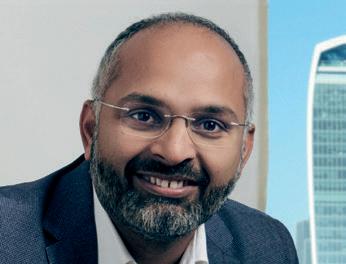










JM. CAMPA European Banking Authority (FR) Chair
C. CHICHE Lydia (FR) CEO A. DALMASSO Satispay (IT) CEO L. DAVID BNP Paribas (FR) Deputy CEO / COO C. HOGG Visa Europe (UK) CEO
I. DIMITROVA OpenPayd (UK) CEO
N. DUFOURCQ Bpifrance (FR) CEO
P. GAUTHIER Ledger (FR) CEO G. GRAPINET Worldline (FR) CEO E. GUEZ Papaya Global (IL) CEO J. JANARDANA Zopa (UK) CEO J. LAMBERT Mastercard (US) Chief Digital Officer JP. MAZOYER Crédit Agricole (FR) Deputy CEO P. NANU Nium (SG) CEO A. PROT Qonto (FR) CEO
F. TRAVELLA Novicap (ES) Executive Chairman
A. SHTILMAN Rapyd (IL) CEO D. KJELLEN Tink (SE) CEO T. GEORGADZE Raisin (DE) CEO E. ROSSIELLO AZA Finance (UK) CEO
M. KNECHT Billie (DE) Co-CEO JC. SAMUELIAN Alan (FR) CEO F. VILLEROY DE GALHAU Banque de France (FR) Governor
M. WEIMERT EPI Company (BE) CEO
S. BOUJNAH Euronext (NL) CEO
2023 SPONSORS INCLUDE: 2023 SPONSORS INCLUDE:





























PRINCIPAL SPONSORS




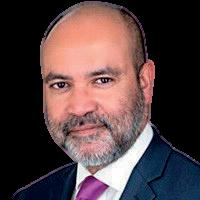





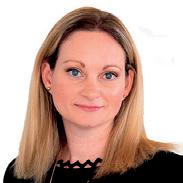


SPONSORS










 Gary Collier Gary Collier CTO of Man Alpha CTO of Man Alpha Technology Man Group Man Group
Rafa Lopez-Espinosa Rafa Lopez-Espinosa COO of International COO of International Business Business Point 72 Point
Romain Boscher Romain Boscher Chairman of the Board, Chairman of the Board, Senior Advisor Senior Advisor Fidelity Investments Fidelity Investments
Cathy Gibson Cathy Gibson Global Head of Trading Global Head of Trading Ninety One Ninety One
Jane Buchan Jane CEO CEO Martlet Asset Martlet Asset Management Management
George Patterson George Patterson Chief Investment Officer Chief Investment Officer PGIM Quantitative PGIM Quantitative Solutions Solutions
Yannig Loyer Yannig Global Head of Trading Global Head of Trading AXA Investment AXA Investment Managers Managers
Marc Wyatt Marc Wyatt Global Head of Trading Global Head of Trading T. Rowe Price T. Rowe Price
Alison Hollingshead Hollingshead COO of Investments COO of Jupiter Asset Jupiter Asset Management Management
Mike Steliaros Mike Global Head of Equity Global Head of Equity Portfolio Engineering Portfolio Engineering and Trading and Trading ADIA ADIA
Shamik Dhar Shamik Dhar Chief Economist Chief BNY Mellon Investment BNY Mellon Investment Management Management
Jon Glennie Jon CTO of Trading CTO of Trading Technologies Technologies JP Morgan Asset JP Morgan Asset Management Management
Palais des Congrès de Paris Palais des Congrès de Paris
Gary Collier Gary Collier CTO of Man Alpha CTO of Man Alpha Technology Man Group Man Group
Rafa Lopez-Espinosa Rafa Lopez-Espinosa COO of International COO of International Business Business Point 72 Point
Romain Boscher Romain Boscher Chairman of the Board, Chairman of the Board, Senior Advisor Senior Advisor Fidelity Investments Fidelity Investments
Cathy Gibson Cathy Gibson Global Head of Trading Global Head of Trading Ninety One Ninety One
Jane Buchan Jane CEO CEO Martlet Asset Martlet Asset Management Management
George Patterson George Patterson Chief Investment Officer Chief Investment Officer PGIM Quantitative PGIM Quantitative Solutions Solutions
Yannig Loyer Yannig Global Head of Trading Global Head of Trading AXA Investment AXA Investment Managers Managers
Marc Wyatt Marc Wyatt Global Head of Trading Global Head of Trading T. Rowe Price T. Rowe Price
Alison Hollingshead Hollingshead COO of Investments COO of Jupiter Asset Jupiter Asset Management Management
Mike Steliaros Mike Global Head of Equity Global Head of Equity Portfolio Engineering Portfolio Engineering and Trading and Trading ADIA ADIA
Shamik Dhar Shamik Dhar Chief Economist Chief BNY Mellon Investment BNY Mellon Investment Management Management
Jon Glennie Jon CTO of Trading CTO of Trading Technologies Technologies JP Morgan Asset JP Morgan Asset Management Management
Palais des Congrès de Paris Palais des Congrès de Paris
No time like the real-time


Back in 2019, Helmut Wacket, head of division at the European Central Bank, told a gathering of payments leaders in Germany that the business case for banks to adopt real-time payments was simple: “The business case for banks is to stay in business!” he said.
Notwithstanding the challenges of legacy technology, banks heeded Wacket’s implicit warning and have adapted and adopted real-time rails. It’s still a work in progress: the European Commission has a vision to create an interoperable network of instant payment schemes cross-border and it’s not satisfied with current levels of service. In October last year it put forward a proposal that would compel all payment service providers (both inside and outside the EU) that offer transfers in euros to be available 24 hours a day, 365 days a year. The Commission hopes that such a move will also drive open banking adoption.
In the United States, there's still all to play for when it comes to real-time, although here much of the innovation around instant payments is being driven by the market, not legislators.


There are a lot of moving parts to keep track of in the US payments space right
now, not least the institutional duopoly of The Clearing House and the Federal Reserve locked in a race to provide instant domestic and instant cross-border services. The Federal Reserve Banks’ FedNow Service to facilitate nationwide, round-the-clock reach of instant payment services by financial institutions is scheduled to go live between May and July 2023. Then there is Swift’s transition to ISO 20022 to consider, which all providers in the US will have to comply with by 2025. And there are signs that the US is finally loosening its grip on paper-based cheques (both B2C and B2B) – a move accelerated by the pandemic.
Volante, a Cloud-based, low-code payments-as-a-service provider, aimed at established institutions looking to engage with what it calls ’payments modernisation 2.0’, is right at the heart of this evolution.

Operating across not just North America, but also LATAM and EMEA, it enables customers, including many mid-tier banks with limited resources, to rapidly bring new payments products and services built on top of instant payment rails to market, fast. Once that real-time door is open, the value-added solutions it unlocks for customers are limitless, says Rachel Hunt, VP for strategy and growth at Volante.
“Instant payments introduces a complete business change in the way that the banks interact with their customers. It’s not just the introduction of a new method of payments; it has a fundamental impact on the way that you run your business, and how you service your customers.
“It’s always a journey towards instant payments, because there are so many parts of the organisation that are going to be touched on: it’s the people, the processes, and the systems you have in place,” she adds. “And what’s really exciting in the US right now is that we’ve reached a hockey-stick moment.
"The pandemic clearly showed that we had to be digital, that it was important to have real-time information and real-time payments to navigate everything we’ve gone through, and make sure organisations could continue to operate. If you want to keep up with all the change that’s going on in the US, or even globally, then you have to think about real-time.”
Following the pandemic, same-day automatic clearing house payments – once seen as a good enough proposition by banks – were no longer viewed as such by their corporate customers.

19 PAYMENTS: INSTANT PAYMENTS USA
ffnews.com Issue 27 | TheFintechMagazine
The US payments landscape is being driven by a unique set of circumstances that will have deep and lasting impact on how business gets done. Volante’s Rachel Hunt says banks must move fast – in more ways than one!
“One, there’s a fee, so there’s a cost to that proposition. That isn't right,” says Hunt. “And second, it’s not real real-time, which is important for a number of reasons, not least liquidity management. Instant payments (mean) you have the visibility to be able to manage your liquidity better.”
In the last couple of years, there has been an uplift in the number of federally insured US depository institutions using The Clearing House’s Real-Time Payments Platform (TCH RTP). Banks joining the scheme are now beginning to think more about the use cases and the value-added services they can build on top.
“We’ve been a key player in that market, and, with some of our customers, have processed some of the first TCH RTP transactions in the US,“ says Hunt.

“Although there are more than 100 participants in TCH RTP, with FedNow we’re talking about instant payments reaching scale in the next few years in the US. There’s a real opportunity to bring real-time payments to tier 2, 3, and 4 organisations.”
For her, the billion dollar question going forward is how can scalability of real-time payments be achieved with accuracy and security across all institutions, but especially among those mid-tier banks, which face challenges on a number of fronts, she says.
“One is the skills available in the market. We’re in an incredibly tight environment, in terms of skill sets and people. And then many of these banks are asking ‘can I really spend this investment building my own teams, building the scalability, the resilience – all of these things that you have to have with real-time payments – in house or should I partner with a vendor?”
Hunt would argue the latter for a number of reasons, not least that by choosing to build themselves they often end up settling for the minimum viable solution which does not allow the organisation to fully benefit from the kind of transformation that real-time payments systems represent. Indeed, many have come to the same conclusion; Hunt says that as-a-service, is now where the majority (80 per cent) of organisations are focussing their strategies as they receive and consume payments software.
“When we talk about SaaS, or PaaS, people always mention cost first. (Yet) there are economies of scale that come with such a service: the vendor invests in that environment, it’s secure, it’s tested, it
complies to the regulation,” says Hunt. “It’s already built for scale, for resilience, for availability, and the right partner is going to bring you the next set of innovation requirements that are going to happen.Because we’re no longer in a world where the new methods of payments happen once every 20 years. The new rails are one thing, but then there’s the valueadded services like Request for Pay/ Request to Pay and questions around how you are going to embed that offering within the broader payments value chain.”
She uses Request to Pay in Europe as an example of how a payments service processed on a real-time rail can have a big impact on both a bank’s corporate and retail customers.
“If you think about your electricity, gas or water bill and you had your utility provider saying, ’I understand it’s difficult times, your bill is $100, but actually we’re sending you a Request to Pay $50, $70, $80, whatever you can afford to pay at this particular time,’ then, from a consumer perspective, you think, ’OK, that’s really nice’. It’s about understanding what your core service offering is to your customer base – can you offer a better customer experience to the end end customer?”
that experience, offer different opportunities and services in the bill pay, if you start attaching APIs and instant payments.”
The emergence of the as-a-service as an alternative to a licensing model (based upon a set contract) coincides with ‘a huge amount of convergence happening in payments’, says Hunt. She urges companies to think about how their payment flows will evolve over time. For instance, you might continue to receive some payments through ACH bulk files, ‘but the best way is to send them through the real-time rails,’. This is especially true of contractors, and individuals operating in the gig economy, for example, where swift payment resolution is a basic requirement.
“There’s going to be some convergence between wires, ACH, and instant payments,“ Hunt observes “and it’s really going to be driven by your customers’ preferences.“
It all comes down to smart routing.
“As individuals, or as corporates, we really don’t care which rail the payment is being used, so long as my payment is going to go through, I have visibility, and it’s based on my own risk preferences, or time requirements,“ she says.
Hunt is particularly excited about the possibilities of adding value in the B2B payments space and how banks can use it to enhance their relationships with corporate customers.
Hunt also sees opportunities to incorporate an instant pay use case into the buy now, pay later space.
“BNPL is still very much reproducing a credit card experience,” she says. “It’s sort of based on account-to-account, but it’s not that seamless, it’s not as instant as you’d like it to be. So, if you could start thinking about BNPL with a bill pay, instant payment sort of use case, that would also be interesting. It’s about delivering the right customer experience, at the end of the day, whilst creating a little bit of efficiency in getting those payments.
“In the US, there’s a huge bill pay industry that is available, but there’s less focus on open APIs, and being able to do the account-to-account in a consistent manner. Again, there’s a big opportunity to improve
“An example would be how can we attach a Request to Pay with an e-invoice, and make that seamless?” she says. “Cross-border e-invoicing is a real headache. There are some standards, but they vary and everybody uses different financial messages. How can banks create a really nice experience, where we join up instant Request to Pay and e-invoicing and make that seamless for a corporate that’s trying to do international payments?
“That’s why it’s so exciting to start seeing linkages between instant-payment central infrastructures cross-border as has already happened in Asia, with Singapore, Thailand, Malaysia signing MOUs, and linking up instant central infrastructures. We’re starting to see it across Europe and the US. That doesn’t mean that SWIFT doesn’t continue to be an important part of those transactions for cross-border, but it gives an alternative. It’s just a really interesting development that’s exciting for the industry. Ultimately, flexibility is what many customers have been looking for.”
20 PAYMENTS: INSTANT PAYMENTS USA TheFintechMagazine | Issue 27 ffnews.com
There's going to be some convergence between wires, ACH, and instant payments and it’s really going to be driven by customers’ preferences





Register Now! ► 45+ Speakers ► 2 Stream Agenda ► Allocation of Free Passes for Member Firms ► 250+ Delegates ► Network, Learn, Connect ► Agenda Created by Senior Industry Experts Event Facts & Figures www.fixtrading.org/nordic2023 Created by the industry, for the industry
Are we falling out of love with cards? If anything, our relationship is proving remarkably resilient, agree Alex Page from FIS Worldpay, G+D’s Alex Gatiragas and Kurt Schmid from Netcetera. Here, they discuss how tokenisation,


and how much it costs retailers and banks to support them as a payment method – and, with increasing adoption of open banking, how many payments might in future be made account-to-account and avoid using them altogether.
Various open banking payments platforms released a series of surveys last summer in which merchants and other payment decisionmakers supported the view that a stake was about to be buried into the heart of our flexible friend.
powered much of that card spend. Global retail e-commerce sales amounted to about $5.2trillion in 2021 and this figure is expected to rise by 56 per cent to about $8.1trillion by 2026, according to Statista.
How long will we persist with card-based payments that have, with a lot of effort, been retro-fitted into an online world?
It’s an important question, given how much is invested in the card economy

In one poll, 25 per cent of respondents in the UK predicted that open banking would become the most popular payment method by 2027. That would be some going, given that data from the British Retail Consortium showed that card payments still accounted for 90 per cent of all retail transactions in 2021, while UK Finance said cards made up 57 per cent of payments overall that year.

The popularity of e-commerce, accelerated by COVID-19 shuttering stores during pandemic lockdowns, has


But, even if cards continue to be the load bearers of that online spend in many countries, the way they are provisioned is changing dramatically. Which isn’t surprising: online is not an ideal transaction channel for cards, which were designed for an analogue and card-present payment era.
The biggest shift in their usage is revealed in the 2023 Global Payments Report from Worldpay by FIS, which tracks transaction trends over the previous 12 months. It showed that digital/mobile wallets were used in 48.6 per cent of e-commerce transactions by value. That would indicate that by now we’ve passed the 50 per cent watermark and are indeed living in the Age of the Digital Wallet. Even more flexible than the plastic on which they’re often based, wallets offer

PAYMENTS: CARDS
click-to-pay and secure customer authentication are all helping to keep the spark alive
TheFintechMagazine | Issue 27 ffnews.com 22
consumers a choice of underlying payment methods. While, more often than not that will still be a card, there are a plethora of other funding options available to them, including – increasingly – buy now, pay later.
As the so-called x-pays, like PayPal, AmazonPay and AliPay, make secure one-click payments a reality for more and more shoppers, companies including FIS Worldpay, G+D and Netcetera, are actively improving the customer experience and security for all card users, however they choose to provision them – and that’s come a long way in a short time since the pandemic.
Alex Page, vice president of solution consulting at payments and financial technology giant FIS, hands much of the credit for facilitating the rapid shift from in-store transacting to online in 2020 to the merchants.

“There has to be a huge amount of investment in marketing brand awareness to get consumers on to your website in the first place,” he says. “And once you’ve got them there, merchants need to focus on securing every customer possible and, ultimately, selling a product at the end of that journey – so, that means optimising the checkout, reducing the number of clicks, and offering consumers the payment experience that they’re after, with a global reach, tapping into local trends and payment methods.
“If, as a consumer, I go to somebody’s website, and I’m not comfortable with the payment experience that’s being offered – or maybe it’s a payment method I don’t trust – then that’s probably going to act as a very big barrier to me going ahead and clicking with that merchant, especially when there is probably a myriad of other providers that can offer the same product with a good experience and at a similar price. It’s a case of toeing that very fine line between implementing security/fraud management solutions and not impacting the customer journey.”
This is where payments tokenisation comes into play. Most of the time it’s invisible to the consumer – protecting their card credentials and other stored details. It can also be used to automatically update a customer’s payment credentials at a merchant if the card expires, or it’s
reported lost or stolen, for example. But there are some less obvious ways that it can benefit the customer, too, even if they don’t know it’s tokenisation, explains Alex Gatiragas, global head of digital solution experience at paytech company Giesecke+Devrient (G+D).

“There are subtle little things that give consumers confidence; like being able to provide the artwork of their digital or physical card, which reassures them that they’re using the appropriate card when they’re paying,” he explains. “Consumers don’t know it’s tokenisation, but I’m sure it helps with their checkout experience.”
Looking to the future, Gatiragas expects to see the self-service provisioning of tokenisation by merchants. A typical user journey then might be: a customer opens an account, receives a debit card, provisions it on to a digital wallet and then has the option to also push it to their favourite merchant – avoiding the necessity to update their card details with every single retailer.
The problem with MFA

One necessary hurdle to creating a truly seamless online retail card payment experience is the introduction of multi-factor authentication, which inevitably adds friction to the payments process – sometimes to the degree that it breaks it altogether if the customer doesn’t have the required device for authentication to hand.
It’s about building awareness among merchants, so they understand the different tools and levers they have at their disposal
Alex Page, FIS Worldpay
This is less of an issue on devices with a digital wallet, in which consumers can upload their card details to pay electronically. In the UK, the use of digital wallets for single transactions now stands at 30 per cent of sales, outstripping contactless payments in-store (24 per cent), conventional card payments online (21 per cent) and cash (17 per cent), according to a 2022
Barclaycard Payments survey. It is therefore unsurprising that an increasing number of online merchants are now using click-to-pay options that act as a shortcut to a customer’s digital wallet in order to facilitate a fast, easy checkout, particularly for those wanting to place an order as a guest.

Is there a perfect solution to balancing security and ease of use? Possibly not, although Page says that the closest we’re likely to get is using more real-time fraud monitoring.
“That involves capturing data around the customer, or prospective customers, using real-time decisioning on that data to say ‘is this a good actor, or potentially a bad actor?’ and therefore making the decision on where you’re accepting that order or not,” he explains.
In some circumstances that data can be used to make exceptions to the standard checkout journey. Page cites the example of one of G+D’s luxury retail clients, which attracts high-net worth individuals who are likely to spend hundreds of thousands of dollars in a single transaction.
“For these customers, it’s a case of just removing all the security elements that you might normally have in place, because the client knows that these individuals are going to spend a huge amount of money and they want the ultimate customer experience for them. That’s a decision they take, based on minimal risk,” he explains.
It highlights how the payments industry can offer granular bespoke levels of security for end users if it’s in possession of the right data. Page says there are already a myriad of different tools that it can use to achieve that.
“With real-time fraud checking solutions, potentially you can route higher risk customers down more stringent authentication routes as well as in those scenarios where you have a high level of trust with the customer, you, as the merchant, use exemptions and bear the additional risk and responsibility,” he adds.
“It’s really about building awareness among merchants, so they understand the different tools and levers that they have at their disposal, and relying on experts to guide them in finding that optimal journey and the decisioning across the organisation.”
ffnews.com Issue 27 | TheFintechMagazine
23
Kurt Schmid, marketing and innovation director for secure digital payments at digital payments solutions company Netcetera in which G+D recently took a majority stake, says the revised Payment Services Directive (PSD2), has already implemented such exemptions in strong customer authentication. But that means there’s also inconsistency in the user experience.
“Sometimes the user is asked to carry out authentication while other times they’re not,” he explains.

“One of the pains in payment processes today is if you get redirected to other devices – so, if you shop on your tablet, but then you need to do a payment authentication on your mobile phone, etc. You’re redirected back and forth from the issuer page to the merchant page. I think that we are seeing improvements in this, but, ultimately, we should not redirect the consumer back and forth on the user journey.”
His preference would be to make ‘authentication that easy, and that convenient’ that nobody would object to doing it. “Then we would have a consistent process. For sure, we would also have a bit more friction, but if we reduce this friction to a minimum, I think that would be a good way forward.”
An answer might be to use existing biometric technology – which many consumers are already using to access functions in their banking app – to validate a wider range of transactions, suggests Schmid.

were with an issuer that challenges every payment, but uses an easy and understandable authentication process.
“It delivers consistency, but it’s trained, and it’s easy, it’s secure, and this is the perfect experience because it is really delivering on the security we want,” Schmid concludes. “So, exemptions and risk rating is one element, but let’s try, as an industry, to remove barriers and make authentication as easy as possible, so people use it frequently.”
Europe is currently engaged in drawing up the next iteration of the revised Payment Services Directive, which laid the foundations for open banking, as it moves towards a regulatory architecture for open finance.
"We’re already seeing quite a lot of disruption within the payments ecosystem, and new, emerging methods that are challenging the card schemes, and the card networks," says Alex Page.
“I think, if we were to fast-forward 20 years, though, we’ll still have the card schemes around, they’ll still be processing a lot of transactions, but we’re going to see more challenge coming into their environment.”
Of course, there are regional differences. In markets such as Brazil and India, real-time payments over non-card networks dominate whereas others, such as Africa and South America are leapfrogging cards altogether in their payments evolution.
Meanwhile, Europe and Australasia are among those already seeing open banking enabling an ever-increasing amount of
Kurt Schmid, Netcetera

“So, for example, if you log on to your computer using biometrics, or if you use Face ID on your phone, this is totally convenient; you typically do this many times a day. And then, if you use the same authentication for payment authentication, it delivers almost no friction,” he says.
Netcetera is a large provider of 3D secure (3DS) services for many issuing banks and has recently been examining authentication success rates. It found that the highest successful conversion rates

"We’ve obviously seen regulation that’s come into the industry to facilitate more account-to-account, or open banking-style payments, and this is an area that I really want to watch closely, over the coming years. There’s still work that needs to be done, as far as I’m concerned, to try to get to parity on consumer experience from an open banking checkout. There are also questions around chargebacks and disputes, and how that would mirror into the open banking environment. But it is an area that has had quite a lot of investment. There are substantial growth figures of open banking payments, and the schemes will undoubtedly want to react to that, and do their best to protect their businesses, going forward.
account-to-account payments. The UK alone saw 6.5 million successful open banking payments in August 2022, up from 2.4 million the year before – a 267 per cent increase. But cards have the advantage of being a physical tried-and-trusted method of payment for many – even if they’re then digitally provisioned onto to another device, such as a smartphone or watch.
“The reality is, consumers recognise the brands for the card networks. I think we’ll continue to see those networks grow – and that’s certainly what we’re seeing through our issuers,” says Gatiragas.
“The other thing to remember is that for some of these alternative payment methods, the primary funding instrument is still a card.”

24 PAYMENTS: CARDS TheFintechMagazine | Issue 27 ffnews.com
The reality is, consumers recognise the brands for the card networks. I think we’ll continue to see those networks grow Alex Gatiragas, G+D
Exemptions and risk rating is one element, but let’s try, as an industry, to remove barriers and make authentication as easy as possible, so people use it frequently
Age of the Digital Wallet: But the underlying payment method is, more often than not, still a card

Mission crıtıcal
“The stock is destroyed, we’ve lost everything. We don’t have insurance; we were refused after the floods in 2012. It would cost us £10,000 a year plus £20,000 for excess.”
That’s a quote from a distraught small business owner whose comic book shop in Hebden Bridge, West Yorkshire, was inundated by the Boxing Day floods that devastated northern England in 2015. Four months later, still one third of the town’s businesses remained shuttered.

When the waters stirred up by the sequential storms Eva, Desmond and Frank finally subsided, victims across the region were left counting the cost in the billions. Some in Hebden Bridge gave up and moved out. Others figured that the chances of a ‘one in 100-year’ event hitting again in their lifetime was remote and soldiered on. They were wrong: in 2021, Storm Ciara rolled in, causing the fourth major flood in their valley in just eight years.
No matter where they occur in the world, the emotional and financial impact of extreme weather events is severe. And, according to risk modelling experts, the human and economic cost of such
disasters is increasing, as rising sea levels and drought increase the frequency and severity of flooding and wildfires.
On any day of the week, the United Nation’s global disaster map pulses with climate-related emergencies – the majority among populations with the least access to financial products that could protect them against the worst happening.
Their vulnerability to weather events that are driven by global warming, which is caused mostly by richer nations, led the G7 to launch Global Shield at the recent COP 27 climate talks in November, a plan to provide such countries with pre-arranged insurance and disaster protection funding.
What a Karachi tailor who’s seen his workshop swept away by deadly monsoons in Pakistan and a comic book trader standing knee-deep in sludge in West Yorkshire want most, of course, is affordable insurance that pays out instantly so they can get their lives back on track. And one way that could be achieved is through parametric technology.
Parametric insurance was born in the late 1990s, but leaders in the insurance space didn’t fully start to offer coverage until the early 2000s when AXA, Swiss RE and

Munich Re began to provide policies that paid out according to set limits as soon as a prespecified trigger was met, regardless of the actual loss.
“One of the most exciting things about parametric insurance is the straightforwardness of the claims process,” says Phil McGriskin, co-founder and CEO of Vitesse, a payment provider that bridges the gap between the insurer and customer by offering a range of payment options –including across borders in multiple local currencies – and helps shorten the payout time from months to a matter of hours.
“Since claims are paid automatically upon verifying that a trigger has been met, insurers are reducing costs related to a claims settlement. In a lot of cases, there is no need to send an adjuster out to inspect damage or to waste employee resources in administrative tasks associated with loss adjustment,” continues McGriskin.
“This is a huge cost saving that can be passed on to the consumer. This opens up access to cheaper insurance, which is key to supporting vulnerable communities.”
In December 2022, Vitesse partnered with climate risk insurance platform and Lloyd’s of London coverholder Yokahu,

PAYMENTS: PARAMETRIC INSURANCE 26
Rising anxiety: Businesses in northern England were refused cover or had it priced out of their reach following the 2012 floods
TheFintechMagazine | Issue 27 ffnews.com
Payments provider Vitesse is helping a new wave of parametric insurers deliver funds where they’re needed, when they’re needed – often in a matter of hours. Co-founder and CEO Phil McGriskin explains the dramatic impact that can have
– which had launched its first parametric hurricane insurance in the Caribbean islands seven months earlier – and parametric insurtech FloodFlash. The latter combines computer models, the Cloud and the Internet of Things to provide cover to businesses specifically at risk of flooding.
“Almost every country in the world has a flood under-insurance problem,” says McGriskin. “In 2021, this amounted to $82billion in global losses, which is almost a third of all economic losses due to natural disasters. Clear and defined parameters in parametric policies mean customers know what is and is not covered; in a time of stress and crisis, this gives them clarity and comfort in what they will be able to claim for. It also gives the underwriter the ability to know their client needs them and that it’s time for them to step into action and help. And that’s where we come in.”

In May 2016, nearly 18 months after the floods that devastated Hebden Bridge, the Association of British Insurers gave an update on how many of those who had cover and who claimed had been paid. Fifteen per cent were still waiting.
“Ninety per cent of small companies fail within a year if they cannot resume operations within five days,” says McGriskin. “To get their customers back on their feet, insurers need to be able to process the claim and make that payment, as quickly as possible.”
Vitesse’s first experience of paying a full commercial flood claim under parametric insurance followed Storm Franklin, which hit the UK in early 2022.
“Measuring not from claim submitted to claim approved – which is how most insurers would measure it – but from water hitting their client’s building to cash hitting their bank account, we achieved a payout for them in five hours and 36 minutes. That makes a material difference to the survival of a business,” says McGriskin.
“Processing cash through the market can be a fairly convoluted process, but through more efficient treasury processing we’re able to ensure there’s the right money, in the right place, at the right time. We can pull funding down from those pots of cash instantly, every time, to service a claim.
“Giving insurers a single platform in which to manage and process payments to reach small business owners within 24 hours, helps people, businesses and communities recover from catastrophe quicker.”
Parametric cover isn’t all about headline-grabbing weather events –although it’s clearly where it can have the most profound impact. Increasingly, the technology is dramatically improving the customer experience in more everyday situations that are faced by both businesses and consumers.
“Parametric providers have been focussed on insuring natural catastrophes, as they’re easy to monitor and confirm something’s happened. You can put up a flood or wind monitor, and you know that, once a limit has been exceeded, a certain amount of damage will have been done. But now we are seeing parametric insurance being used more and more in vehicle and travel insurance, and beyond,” says McGriskin.
are harder to come by and a welcome holiday could be marred by a cancelled flight. An insurer can provide cover to activate upon cancellation so the insured can purchase a return flight home without worrying about how they pay for it.
“Such parametric covers are quite closely twinned with embedded finance. And I still think that has a long way to run. As we do more and more online, the ability to tick a box to have what you’ve just bought covered for a small price is very appealing. And having that one-click digital experience replicated across the claims process, right the way through to payment, is how you win the market.”
As a paytech, Vitesse made its mark by offering a single connection to a network of domestic clearing systems for insurers, financial services companies, e-commerce and other corporates, landing full value payments as quickly as possible with the payee, while also giving its clients a simple, real-time view of their global liquidity.

“Software is intrinsic to the process because it allows everything to happen in real time,” says McGriskin. “Parametric covers rely on businesses like McKenzie Intelligence Services, a software provider that taps into data sources that will allow parametric providers to understand where in the world a problem is occurring, how severe it is, and to what extent the goods that they have covered are damaged.
“A lot of vehicles being sold now will be fitted with onitoring systems that record if the vehicle is damaged somehow. The claim will be initiated by the car’s systems and sent off to the manufacturer or the insurance provider. It's paid and settled without the driver having to get involved, which is great for the driver's insurance experience and for the manufacturers themselves because it keeps the customer within their dealer/ repair network, keeping their costs leaner.
“Parametrics also feed down into the travel space, which many of us can relate to – I think we all have experienced delays and cancellations across the past couple of years. Companies have seen this pain point and are building covers around that.
“That’s all the more important with the cost-of-living crisis, when disposable funds
“But software also includes payments,” he continues. “It’s about making sure that once you have all of this information and you've made your decision, that you’re not making the customer wait to get their money and that it’s paid in the way that’s going to make the most difference to them.
“It might be a real-time payment to a card or a multimillion dollar-to-peso payment to a bank account in Mexico. You have to make sure you have that in place because there’s no point in saying I can give you a judgement on your claim immediately, but you get your money in two weeks.
“I would like to think Vitesse is getting a bit of a reputation for innovating across the insurance space and we are uniquely placed to do that,” McGriskin adds.
“We’re looking forward to being the payment partner of choice for parametric insurers. To that end, we’ll continue to innovate, bringing real value to our customers and most importantly, to the end consumer.”
27
Ninety per cent of small companies fail within a year if they cannot resume operations within five days
Disaster relief: Parametrics are key to supporting those most vulnerable to climate events
ffnews.com Issue 27 | TheFintechMagazine
Better Manage Market Ups and Downs
Cutting-edge solutions help you value and risk manage your derivatives and fixed income portfolios


• Adapt to market change and uncertainty with world-class analytics that enable improved investment decisions.
• Maximize returns and minimize losses with powerful tools that empower you to try out your trading ideas.
• Understand the impact of market conditions with granular insights into the drivers of risk and return.
• Get flexible deployment options ranging from a single desktop to a high-performance cloud solution.


Get in touch today: Or visit us at: info@fincad.com www.fincad.com
Terrie Smith, Co-founder and Global Ambassador at wearable tech pioneer DIGISEQ, on why issuers should open their eyes to a new dawn in wearable payments





The age of contactless payments has arrived. Now accounting for more than 50 per cent of all POS transactions worldwide, contactless technology has evolved to become even more efficient, affordable and user-friendly, with wearable payment tech leading the way among a spate of new services hitting the market.
Mobile POS (mPOS) services – such as Apple’s Tap to Pay – are enabling millions of merchants, from small businesses to large retailers, to convert their iPhones or iPads into POS devices that can accept contactless payments, digital wallets, and any wearable tech item with a simple tap – without the need for specialised POS terminals or hardware. In fact, it is estimated that there will be as many
as 34.5 million retailers using mPOS solutions globally by 2027.
The continuing convergence of contactless and mPOS is music to the ears of banks and issuers aiming to capture more contactless transactions through their mobile banking apps and digital wallets. In the UK alone, new data from Barclays – which sees nearly half of the nation’s debit and credit card spending – reveals that a record 91.2 per cent of all eligible card transactions were made using contactless payments in 2022, a sign that consumers and businesses are continuing to shift to next-generation technology when buying and selling.
With merchants in all industries adopting mPOS solutions, wearable technology is being pushed into more applications, use cases and areas where, until recently, only cash could be utilised.
When the first contactless payment card was introduced to the UK market in 2007, users could only make low-value purchases of £10 or less – ideal for fast food restaurants, coffee shops, and other perishables that could be purchased on-the-go. However, successive increases in the contactless limit have allowed customers to utilise contactless to pay for more expensive items from a wider variety of in-store merchants.
It’s now possible to use contactless to pay for weekly grocery runs, fill up with petrol, and make large-value purchases in other retail settings. According to data from UK Finance, the average contactless payment climbed by about 30 per cent when the £100 threshold – which replaced the previous £45 cap – was introduced in October 2021.
Even when comparing 2022 against the contactless transactions made at the end of 2021, after the higher £100 limit had been introduced, transaction values were still 5.3 per cent up on 2021’s figures.
PAYMENTS: WEARABLES
TheFintechMagazine | Issue 27 ffnews.com 30
Previously, many banks and issuers were reluctant to fully explore wearable technology due to misconceptions regarding costs and complexity, with their hesitation costing them both valuable transaction growth as well as potential new clients.
This reluctance to test wearable technology can largely be attributed to prior failures. Heralded at the time as the next contactless revolution, the most well-known example of this is arguably the introduction of the bPay brand by Barclaycard in 2014.
With bPay, users had to purchase the wearable, place the chip into the item themselves, download an app, register the device, and then transfer funds from a separate account in order to make a payment. Subsequently, due to this convoluted and fragmented approach, drawing in new users proved extremely difficult.
Perhaps even more significant is the fact that Barclaycard declined to enable Apple Pay, which launched around the same time. With the ability to link all debit
and credit card payment methods in one wallet – on phones and smartwatches – both Apple and Google Pay quickly attracted the attention of consumers, and as a result, banks suffered defeat in the opening battle over wearable tech and mobile wallets, with bPay eventually being phased out.
GIVE THEM WANT THEY WANT
So, what’s behind the current boom in wearable payment technology? And why are wearables once again capturing the imagination of banks and other businesses?
It’s clear that consumers want more portable, fashionable, and convenient products that support contactless payments. The past 10 years have demonstrated how rapidly people grew accustomed to tying their cards to mobile wallets, smartwatches, and other active wearable devices. The convenience of these devices, however, is somewhat constrained by their battery life.
By transitioning to passive objects that don’t require a battery to operate, wearable technology has been able to
customers with almost unlimited options in how they make payments.
Previously, any chip-enabled item that required personalisation would need to be provisioned with client data by the manufacturer before heading back to the bank and finally being delivered to the customer – a laborious, costly and time-consuming process.

Without the bank having to lift a finger, today’s wearable technology solutions can handle payment enablement from beginning to end at a considerably reduced cost. Using over-the-air remote provisioning, payment information can be sent to any wearable device directly from the customer’s Android or iOS mobile device, wherever they may be.
This enables users to immediately link their payment card to their wearable device and begin using it. Globally, there are more than 2.5 billion active Android users and 1.5 billion iPhone users, thus presenting a significant opportunity for wearable technology to become an integral part of peoples’ daily lives.
Additionally, banks have access to a wealth of real-time data on client behaviour, and can even send customers exclusive offers and incentives to boost spending at merchant partners. With the knowledge that their contactless transactions are protected and tokenised in the same way as NFC mobile payments, users can also monitor their activity while receiving instant transaction alerts.
tackle this problem head on. Today, a contactless chip can be embedded into a ring, bracelet, and even items of clothing. This chip can then be connected to a cardholder's bank or prepaid account and instantaneously activated using an iPhone or Android device.
We are now witnessing wearable technology becoming more aspirational and more attractive to customers as contactless technology gets smaller and smarter – as can be seen by the rapidly expanding assortment of high-end designer fashion items that also function as contactless devices. In addition, it is now much simpler, quicker, and cost effective for banks to get wearables into their clients' hands and provide their
With the global wearable payment device market size projected to reach US $82billion by 2026, growing at a CAGR of 13.6 per cent during the forecast period, the Internet of Things is also rapidly expanding – integrating access control, brand consumer engagement, and payment applications across 5G and Wi-Fi, and an estimated 41 billion devices by 2027. This increase is likely to be greatly influenced by the potential of wearable technology to foster much more immersive bank-customer connections and engagements.
Wearable technology is opening doors for banks and financial institutions who are looking to reduce expenses and develop stronger relationships with their clients. Now is the time for banks to seize the once-in-a-generation opportunity afforded through wearable payment tech and, quite literally, get closer to their customers.
ffnews.com Issue 27 | TheFintechMagazine
31
It is now much simpler, quicker, and cost effective for banks to get wearables into their clients’ hands and provide their customers with almost unlimited options in how they make payments
Wake-up calls
We asked Mobiquity’s VP of global digital banking Peter-Jan Van de Venn and the fintech futurist and author Brett King where banks should focus their IT investment in an uncertain year

A mildly upbeat Davos summit, a forecast 0.1 per cent economic growth in 2023 (well, at least it’s not a recession) and one of the warmest Januarys on record provided a better-than-expected start to the year in Europe.
Energy prices eased back slightly, too, and China finally began to open up its economy following COVID. Relief indeed. Across the Pond, fourth-quarter output data from the US also modestly topped forecasts with 2.9 per cent y-o-y growth.
But that’s where the good news ends for banks; make no mistake, incumbents face a rough ride in 2023, despite the sector’s profitability hitting a 14-year high in 2022 when margins took off as interest rates finally climbed from historic lows in an attempt to calm rampant inflation. However, this year consulting giant McKinsey foresees a period of belt tightening because at least half the world’s banks ‘continue to have a return on equity that is below the cost of equity’.
TECHNOLOGY TRENDS BANKS
CAN’T IGNORE IN 2023

PETER-JAN VAN DE VENN’S TOP 3
Hyper-personalisation: “With the help of AI, banks will use data to truly improve the financial lives of customers. That’s still a big friction; there’s so much data but it’s used to push products.”
Open banking acceleration: “There’s still a lot of unlocked potential in open banking. Client-centric uses are required to significantly speed up adoption.”
Core banking replacement: “To be truly digital, you need digital technologies on all architectural layers.”

According to its annual Global Banking Annual Review, 2022’s margin rises only delivered returns above that waterline for 35 per cent of banks.
Add to that a war on European soil with no end in sight, continued supply chain aftershocks from the pandemic and a cryptocurrency collapse, and it must be tempting to stop all investment until the fog clears. Fintech futurist Brett King and Mobiquity’s digital banking VP Peter-Jan Van de Venn would caution banks not to lose digital ground now, though.

The cornerstone of future resilience is no let-up in tech modernisation, says Van de Venn. And he points to three tech trends – hyper-personalisation, open banking acceleration and core banking replacement – when choosing how to spend budgets wisely.

“Due to the economic uncertainty, banks will use data to improve the financial lives of their customers. That’s still a big friction. There is so much data, but it is used to push products,” he says.

“As for open banking, in the UK more than five million customers have adopted its services but there is still a lot of unlocked potential in open banking. Client-centric uses are required to significantly speed up adoption.
“Meanwhile, many chief information officers are pushing for core banking replacement because, to be truly digital, you need digital technologies on all architectural layers. We are building a complete new Cloud-based technology stack for one of our UK customers because, with their current mainframe, they can’t compete any more on the product level. So it’s inevitable that core banking replacement will continue.”
The urgency around tech stack modernisation is echoed by King, who asserts that, in 10 to 15 years, all banks will have adopted Cloud-based systems
due to the demands of security, fintech partnerships and lower energy use.
He says: “You never hear a fintech talk about a core system because they don’t really have that; Cloud gives them the agility they want. That’s one driver of digital transformation, but the other is sustainable computing – you can have much better energy management. That’s why banks like ICBC [the stateowned Industrial and Commercial Bank of China] have shifted 90 per cent of their mainframe traffic to the Cloud. You can put it closer to the generation source in terms of renewables.
“There’s also the emergence of quantum computing, which can break all of the conventional encryption we have today, and will mean that if you’re not in the Cloud, your on-premises solution will be completely open.
“My other trend of 2023, taking a global view versus a Western view, is wallet integration – more people use mobile wallets for day-to-day banking than any plastic card. And where there’s been big progress, such as Paytm in India, Alipay and WeChat Pay in China, MTN and M-Pesa in Africa, there’ll be a lot of pressure on banks to develop embedded finance through the wallet ecosystem.”
Mobiquity builds digital banking value propositions and architectures, typically using components from modern third-party software-as-a-service vendors, so it’s no surprise that Van de Venn urges banks to break the chains of any remaining legacy hardware. But his main message to incumbents is that they are not as unique, nor as special as they might like to believe – which could be a good thing for their IT budget. Having worked with around 80 digital banks across the world, he says 80 per cent of the functionality provided by IT systems is common to all of them; the
FINTECH FOCUS: IT INVESTMENT STRATEGIES
TheFintechMagazine | Issue 27 ffnews.com 32
best strategy, therefore, is to replicate commonalities, which allows a bank to focus its budget on the 20 per cent that makes them stand out from the crowd.
Van de Venn says: “We build the commonalities in a very efficient way by leveraging out-of-the-box capabilities of existing vendors. There are many that we work with, such as Backbase and Mambu, that have already built architectures. That allows us to have more budget for the differentiation, the other 20 per cent.
“We ensure we have a deep understanding of our customer so we can provide an additional layer on top of those commonalities that are in line with their brand promise and crucial to their success.

“We also fully embrace the concept of composable architectures, setting up the architecture so components can be easily interchanged.
If there is better technology for a particular area, you can replace it.”

Learning from and adopting the technical strengths of fintechs is another crucial tactic for incumbents, says King: “Buy now, pay later, salary advances, all these innovations are not coming from incumbents, they’re coming from people with more agile tech stacks.


“And we know fintechs are much better at cash utilisation. They can innovate faster and more cheaply than incumbents. From an acquisition or a scaling perspective, this becomes very important.
“A lot of the benefits that we’ve seen from successful fintechs – Wise, Nubank, WeBank, etc – in terms of their utilisation of cash, have set a benchmark. Incumbents are under pressure to have the sort of cash efficiency that comes from digital transformation.
ffnews.com Issue 27 | TheFintechMagazine
33 Time for change: A progressive approach to IT – even in times of constraint – is essential for incumbents
“Nubank has just crossed 70 million customers in eight years. There’s no bank in Latin America with branches that could have ever done that. So, you know, you have to assume that Nubank’s going to continue to do that, and, in that environment, if you can’t scale in the same way they can, you are going to be giving up market share to them.
“You hear banks talking about profitability, but investors really don’t care about that if they’re grabbing market share.”
Investors, though, are fickle and there are already signs that they’re paying closer attention to the bottom line: pressure on banks to spend wisely is also evident within the financial sector’s innovation programmes, which are seeking more practical outcomes, says Van de Venn.
This shift from wider strategic goals to tangible shorter-term gains – what he calls ‘horizon 3 to horizon 1’ – has resulted in products such as the digital identity wallet Datakeeper by Dutch bank Rabobank, which keeps personal data on a smartphone.
“We see a shift to innovation with shorter-term value that is directly in line with, or adjacent to, the business of the bank,” he says.
“A digital identity wallet is, of course, something close to the initial value that banks brought to their customers, i.e. protecting valuable assets, and identity is a valuable asset these days. The focus on shorter-term, closer-to-the-business innovation definitely needs to continue.”

Another area of concern for banks in a higher inflation environment is the prospect of worsening levels of loan defaults – and both King and Van de Venn agree data will hold the key to mitigating those increasingly likely losses.
They believe the industry will move beyond backward-looking credit reports and instead use AI models to predict problems through customer behaviour.
King says: “There’s one data point we use which is 80 per cent more successful at predicting default rate than a credit score. It’s simply whether someone pays their mobile phone bill on time.
“So, with all the behavioural data out there it gets really interesting a few years out. Looking at how we handle default today, we maybe give a customer a reminder they haven’t paid, then, when they’re 30 or 60 days over, we involve lawyers and collection and chase people.
“But if you look at this as a behavioural problem, there are numerous solutions. If I know, based on current cashflow, that you won’t meet your loan commitments in three months, I can ask you if you want to extend the life of the loan to reduce monthly repayments. Ultimately, customers will self-select services that are more flexible for them.
“As a banking sector, we’ve got sidetracked into looking at things like cashback and rewards to stimulate spending because that’s how we make a fee. But if we get wallets that are focussed
environmental credentials will become central to a bank’s brand.
Van de Venn says: “We are running a carbon bank initiative for one of our customers and out of this we help their clients improve their awareness of their carbon footprint, based on their transactions. Some banks are still trying to buy carbon credits to offset what they should do, but it’s a start. For the reputation of banks, it will be important to keep investing in ESG, and, if you can monetise it that will have an accelerating effect.”
King adds: “I don’t think we’re going to get back to a ‘normal’ in the way we thought about it in the 1980s and 1990s. Economic uncertainty is just going to be a feature due to the impact of artificial intelligence, techno unemployment and the impact of climate change.
“By the mid-2030s I think every corporation is going to have a social mission as a side-effect of climate change and so on – they will have to be seen to be doing something helpful and productive for society, rather than just producing profitability.
TECHNOLOGY TRENDS BANKS CAN’T IGNORE IN 2023 BRETT KING'S TOP 3
Working smarter: Banks need different skillsets to weather a rough ride in 2023
on financial wellness of customers, then the likelihood of credit problems declines.”
A further cultural change that both King and Van de Venn foresee is one that has already begun – environmental, social and corporate governance, or ESG.
Though Van de Venn points out that 90 per cent of banks say ESG is part of their business but only 50 per cent measure their efforts, both men agree
Wallet integration: “It doesn’t matter if you’re looking at crypto, digital assets, the metaverse or embedded finance solutions. Mobile wallets are it.”
“This won’t be about doing press releases and buying carbon credits. Our children will be asking ‘what has capitalism brought us?’ It’s brought climate change, massive inequality, pollution – 10 million people die a year from air pollution issues and we had 65 million eco refugees last year. “Corporations are going to have to contribute in a very different way. ESG is just the start of that cultural shift in terms of corporations’ missions to do broader good.”
Tech competency at organisational level: “For execution capability in a low-latency world, you need different skillsets from the top down. So look at someone like Ant Group as a basis of how you should be thinking about organisational design. That’s a massive leap for many banks to take.”
Credit innovation: “Banks have to think about transitioning off credit cards, as a product line, to contextual ways to deliver credit in real time.”
So, while maybe not the ideal metaphor for our climate-challenged time, the message is clear to banks and incumbents when it comes to innovation. We’ll let Brett King sum it up: “You can’t take your foot off the gas pedal yet.”

34 FINTECH FOCUS: IT INVESTMENT STRATEGIES TheFintechMagazine | Issue 27 ffnews.com


Ohio’s Economic Development Corporation
PILOTING BIGGER BANKS TO SAFETY
Kunal Galav from Mambu, a banking technology provider for challenger banks and speedboats, and McKinsey analyst Henning Soller discuss how incumbents mired in complexity can compete in shifting seas
Digital transformation is a well-established trope among legacy institutions, but simply adding new technology to an already complex infrastructure hasn’t proven to be an effective strategy for long-term growth.
In fact, the prevailing sentiment from key players in the industry is that cultural transformation is more important. Strategies to achieve this need to be considered if incumbent banks are to continue competing with challenger banks around the world, who typically spend around $120 less to sign up a new customer than a traditional bank.
In McKinsey’s recent Annual Review Of Banking, the firm concluded: “Over the next five to 10 years, market pressures and shifts, including technological changes that disrupt traditional banking, will amount to fundamental structural breaks.
“Banks will need to improve their short-term resilience and invest in the long term to innovate and prepare the path for future profitability, increased growth, and higher valuations.”

Another McKinsey report suggested established companies ‘should launch new businesses that have start-up-like freedom’ to guard against disruption and ensure long-term survival.
Mambu, where Kunal Galav heads up partnership development, helps companies do just that by providing the infrastructure to launch ‘speedboats’; agile new ventures that use less resources, but are supported by the incumbent.

Mambu has been building core banking engines for 12 years and has 250-plus customers across 65 countries. It’s served disruptors such as TymeBank and N26, helping them slash operating costs, as well as Tier 1 institutions, including

Dutch bank ABN AMRO – which launched a spin-off lender for small and medium-sized businesses called New10 in 2017.
Many of the larger banks Mambu has worked with turn to it because they recognise that their existing technology and operating models are ‘too slow, expensive and resource-heavy’, says Galav. But the overarching problem for these banks is adopting new technologies without acknowledging the need for the cultural and structural change required to make those products truly valuable.
Successful challengers are those that are driven first and foremost by changing customer needs. Galav points out that ‘when the first wave of digital banks by incumbents came up, they weren’t successful because they [continued] what they were already doing, just with digital “on top”… Customers are increasingly expecting banks to be a day-to-day part
THE GOOD SHIP BANKING THE GOOD SHIP BANKING
36 PARTNERSHIPS: SPEEDBOATS
CHALLENGER CHALLENGER
TheFintechMagazine | Issue 27 ffnews.com
Change ahoy!: Could bank-launched neos reverse-engineer cultural change?
of their lives. And that’s how incumbents need to work’.
Henning Soller, a partner at consultants McKinsey agrees that, by and large, they’re stuck with ‘the culture, the processes and the legacy technology that they have acquired over time’.

“I think traditional banks and digital banks agree on customer focus, going forward,” he says. “However, where they have different views is what makes a good digital customer experience, and how banks can build digital processes… The mindset change required to overcome these paradigms is significant and much bigger than we had originally thought.”
With established cultures and infrastructure being difficult, even impossible, to change, one answer, he suggests, is to build something on the side of the organisation that allows for the digital experience. “And, over time, by building a digital mindset and culture in a newly established entity, you will be able to change the culture [of the main organisation] also.”
It’s something that is being explored across the banking world, to varying degrees of success. In a previous issue, we featured Mox Bank, a Hong Kong offshoot of Standard Chartered, which was looking for a radical new approach to banking. We’ve also featured a conversation with Dr Dennis Khoo, who led the creation of United Overseas Bank’s digital challenger TMRW. He went so far as to say ‘there’s no such thing as digital transformation’ in purely technological terms: his experience taught him that people and processes need to be the focus. And here, incumbents face another challenge: retaining and even attracting top talent is becoming more difficult. Galav picks up on the importance of motivated people.
“For a fresh engineering grad [at an incumbent] looking at code which was written a long time ago, you’re thinking, ’I don’t understand this,’ and yet you still need to fix it… imagine the motivation levels in that situation.”
Indeed, the McKinsey Global Banking Report highlights the need to invest in attracting, reskilling, and retaining the best talent to preserve organisational resilience among banks.
“Create fun workplaces, where staff know that what they are doing has a tangible impact,” says Galav. “That’s why creating something on the side, providing modern
developer experiences and modern tools and getting staff to feel how they’re impacting the customer is critical.”
Speedboats in and of themselves represent a ‘new way of working’, Soller says: “A new approach, a new vision, that challenges the incumbent bank.
“Meanwhile, there needs to be a big renovation, restoration, implementation of interface layers, so that, over time, the migration to a more modern platform can happen for the legacy business.”
Questions also need to be asked along the lines of ‘how do we get rid of legacy code that was written somewhere in the mainframe times?’ and ‘how do we get the complexity of the entire estate down? ’ because product-focussed digital transformation initiatives have themselves resulted in further layers being added to an already sedimentary infrastructure. Rather than solving the problem, it’s kicked it further down the road.
Both Galav and Soller agree that regulation is not at fault for creating this situation and regulation itself can no longer be seen as an excuse for larger banks that
institutions tend to keep adding new layers. At least that’s the way it has been.
“Looking at the IT complexity in the banks, we saw a correlation between the size of the balance sheet, and the number of applications that a bank has… meaning you afford the complexity that your bank provides,” says Soller.
“The reason why banks in the Middle East, banks in India, or elsewhere have been more successful was because their balance sheet was smaller. They needed to do something about this.”
So, they readily adopted a digital proposition, he says, whereas elsewhere established organisations ‘were much more comfortable’ and, as a result, have largely stayed as they were. But according to the Global Banking Report, banks just won’t have the money for feather-bedding in future. Creating standalones, perhaps in partnership with others, might be the best way of ensuring not just their long-term transformation but their long-term survival.
COMPOSABLE SOLUTION
Organisations like Mambu hope to be part of the solution, providing the tools to enable change in larger organisations. And it’s no longer simply about adopting the Cloud, which should now be seen as ‘table stakes’, suggests Galav.
“Our platform helps in three ways. We have a real-time subledger, allowing the bank to react to things live, not waiting for a process to run over the weekend, and for payments to show up 48 hours later.
“Secondly, we provide the ability to integrate with the bank’s current setup. And thirdly, we have configuration-based products that are good for the customers.”

to compete to do nothing it. That crutch has been kicked away: many challenger banks, after all, hold a full banking licence.
“The complexity that we see is not driven by the regulators,” says Soller. The layers of database technologies, old and new, that act as a barrier to entering certain markets, are a problem created by the banks, not the overseers, he contends.
Soller also points to previous McKinsey analysis that suggests incumbents just can’t help themselves finance complexity because they have such deep pockets. While leaner organisations will prioritise efficiency, and make this an ongoing concern, big
Dutch global bank ABN Amro chose Mambu as the core engine for its spin-off New10. It built its architecture on API-enabled services, leveraging a wide ecosystem of third-party vendors to create a new offer in the business banking market. By deploying on Amazon Web Services (AWS), New10 benefitted from instant scalability and elasticity, reduced operational effort, and automation. Made up of a small team of internal and external talent, the startup had a go-to-market time of less than a year and is now viewed by the main bank as ‘the spider at the centre of a web’, as one senior exec described it, spinning out ideas that are influencing ABN Amro’s entire commercial banking strategy.
37
ffnews.com Issue 27 | TheFintechMagazine
Traditional banks and digital banks agree on customer focus going forward. Where they have different views is what makes a good digital customer experience and how banks can build digital processes. The mindset change is bigger than we thought Henning Soller, McKinsey struggling
That instant scalability and elasticity is clearly attractive; the ability for existing organisations to essentially start afresh allows for progress and innovation. According to a report last year from Simon-Kucher & Partners, one in three neobanks is considered a ‘speedboat’– and they typically have deeper funding than the independent startups they compete with.
“These speedboats can capture additional synergies and open new strategic avenues, such as business diversification, new revenue streams, keep the pace with market and customer change, or build more agile, innovative, and efficient operating models,” says Galav. That said, it would be wrong to see them as a quick-fix solution to the problems facing the parent body. “Organisations like Mambu are enablers, but there still has to be cultural change.”
Soller agrees: “Mambu, and other tech platforms in the same space, can only be a catalyst to the developments that have to happen within the organisation.
NEOS OF NOTE
“In order to make [transformation] successful, and to make sure there is nothing adding to the bank’s overall complexity, there needs to be a talent shift within the organisation, because the thinking should now be, ‘this is what our future should look
Ayaz Haji, chief data officer and head of data engineering at Credit Suisse has previously suggested that ‘banks should seriously consider putting a technologist, such as their CTO, on the board’ as a way of integrating an engineering viewpoint at the top of the company.
For many institutions this change at management level is a seismic shift in thinking. Nonetheless, both Soller and Galav agree it is vital.
“If people at the top fail to understand that this is currently the most important transformation in banking, and that this is the only path to their possible future as a bank, then [any additional digital developments] are futile,” says Soller.
like; how can we make our legacy bank into something that operates and looks like what we have acquired/launched?’.”
And that vision has to start at the top – at board level – he adds.
“If this is left somewhere within the IT department, and people say, ‘it’s a technology transformation’, it will not be successful. This is because it’s a whole bank transformation, and that requires a change of mindset around how we think about talent and technology.”
WEIGHING ANCHOR: MAKING A SUCCESS OF A SPEEDBOAT
Successful speedboat launches tend to share tell-tale characteristics.
They focus on new or underserved customer segments; they adopt a customer-experience-led model; they strive for simplicity and low cost at scale; they use agile ways of working with an ability to pivot at pace; and they have an entrepreneurial culture and talent pool.
Here are some notable examples:
CHASE – JPMORGAN
JPMorgan is showing patience with its first retail banking presence outside of the US, despite making a thumping $450million loss in its first year.
Digital bank Chase, which already has 50 million users in the States, attracted half a million customers, more than $10billion in deposits and processed 20 million payments in its first 12 months of operation in the UK.
The bank shuttered its US digital-only neo Finn in 2019 after just a year of operation. However, it remains bullish about Chase’s future. In September 2022, it announced that it’s doubling the size of its European workforce to at least 2,000.
Sanjiv Somani, UK chief executive of

Chase, maintains: "We want to be international, starting with the UK. You have to look at a 10-year view. If you look at anything shorter it will not lead to the right conclusion.”
WEYAY – NBK
In November 2021, the National Bank of Kuwait (NBK) launched Weyay, the country’s first fully digital bank, aimed at its young, tech-savvy demographic. Weyay’s services and products are tailor-made for young people’s lifestyles and followed lengthy research with its target audience, particularly around the user interface.
At the end of 2022, head of consumer banking group at NBK, Mohammed Al-Othman, said Weyay Bank had exceeded its customer acquisition goal by 300 per cent in its first year. One of its biggest draws is fast, simple onboarding, achieved by limiting the number of data fields users are expected to enter.
MOX – STANDARD CHARTERED
In September 2020, Standard Chartered’s app-only Mox hit the Hong Kong market, promising ‘all the advantages you’d expect
from a bank such as a robust regulatory, financial, compliance and risk modelling frameworks, security and reliability, together with many of the strengths you’d expect from a fintech such as speed, innovation and client experience’.
A joint venture with PCCW, Hong Kong Telecom and online travel agency Trip.com, Mox is expected to break even towards the end of 2023 or early 2024.
BankMD – TransPecos Banks, SSB
Launched by a 100-year-old, mid-tier Texas community bank in 2019, this neo is an extreme example of niche banking.
Focussed on serving a single professional class – the state’s physicians – its mission is to connect them to ‘finances and opportunities by doing things others said could not be done’, offering tailored flexible financing and banking solutions.
The parent bank’s total assets grew 110 per cent between 2018 and 2020 – an increase BankMD’s founder attributed to the neo. Its model of ‘picking up the highest value customers at the lowest acquisition costs’ by leveraging technology and partnerships could, he said, be a $3billion business.
38 PARTNERSHIPS: SPEEDBOATS TheFintechMagazine | Issue 27 ffnews.com
Speedboats can capture additional synergies and open new strategic avenues such as business diversification, new revenue streams, keep pace with market and customer change, or build more agile, innovative, and efficient operating models
Kunal Galav, Mambu











































17 MAY 2023 LONDON Shaping the future of eCommerce payments Join ePay Europe's stage for our dedicated agenda on eCommerce payments LEARN MORE AT www.epaysummit.com
Beating digitaldrum
African fintechs are ‘doing it for themselves’. We asked three leading members of its fintech ecosystem – Matthew Barnard, Gwera Kiwana and Matteo Rizzi – what that means for them… and the rest of the world
“Everything is a fintech in Africa,” observes Matteo Rizzi.



From a city with more pre-loaded bus passes than bank accounts, to drought monitors that compensate farmers for crop losses, it’s the fastest-growing startup community on the continent – and the sector’s revenues are predicted to keep on growing… by a factor of eight to $30billion by 2025, according to McKinsey.
Investment is significantly up, too –bucking the worldwide nervousness shown by VCs towards tech in other markets. Investment in Africa’s tech ecosystem went up by eight per cent in 2022, hitting a new record of $6.5billion. The US, by comparison, saw deal values down by 30 per cent.
But perhaps the most significant shift in the local fintech landscape is that it’s African innovators, companies and backers developing solutions for themselves now. The rest of the world can look on with humility and respect. It might even learn something from this grassroots approach to innovation.
That’s not to say the African model of fintech entrepreneurship is without its challenges. As Rizzi, a financial services entrepreneur and co-founder of FTS Group, a consultancy that builds fintech ecosystems, points out, a sector largely dominated by locally made solutions, tailored to domestic consumer needs means a frustrating lack of interoperability.
“Each specific ecosystem in Africa, for historical and technical reasons, has different customer demands that drive financial inclusion,” explains Rizzi. “It’s very uneven – from a country like Mozambique, which is 60 million people, but doesn’t have an Uber, to a country like Angola, where there is not yet even a digital bank.”
The hyper-focus on understanding local challenges and coming up with imaginative ways to solve them is might be a lesson in customer centricity, but it creates challenges of its own for businesses that want to scale.
Varying levels of digital maturity means that places with more advanced financial systems and infrastructure, such as Nigeria and South Africa, are better placed to accelerate and scale fintech innovation than others. That said, there’s a local proverb that says ‘the sound of the drum depends on the drummer’; and the noise coming out of this fintech ecosystem is both loud and distinctly different to what investors up until now have come to expect.
“Previously, companies from Europe or America were coming in and trying to impose European and American solutions onto Africa,” says Matthew Barnard, executive director at at South-African born software solutions company BBD. “The tide has changed. Now Africans, and African countries, are developing solutions that are very specific for them.

“What I am seeing is a hell of a lot of innovation happening; people now have access to technology, access to the internet, access to public Cloud [and] are able to innovate faster and faster.”
Africa is a massive continent, with 54 different countries and at least 75 languages spoken by 1.4 billion people. It's this size and diversity which has led to both a highly innovative and highly fragmented market, exacerbated by infrastructure challenges across the continent.
But then they come up against that lack of infrastructure – and it’s particularly apparent in the payments space.
“If we can describe payments in Europe and North America as one per cent finished, in Africa it’s 0.01 per cent,” says Gwera Kiwana, who previously worked at UK neobank Monzo and fintech consultancy 11:FS. She is now founder in residence for crypto at MFS Africa, the


WORLD FOCUS: AFRICA
TheFintechMagazine | Issue 27 ffnews.com 40
We’re seeing a wave of ‘by us, for us’ products, services and solutions being built –rather than Global North companies coming to Africa and building things that people just don’t want, or won’t use
Gwera Kiwana, MFS Africa
Out of Africa: The continent has seen a boom in fintech solutions geared to its specific needs largest payments hub in the region, whose network integrates more than 400 million mobile money accounts across at least 35 African countries.

“There are a lot of really cool companies and people building really thoughtful products and services,” Kiwana says.
But ‘it’s the companies connecting these markets to each other that are doing a lot of the heavy lifting’, she adds.
While there are some organisations, as with the Gates Foundation’s Mojaloop initiative, that are attempting to build an ubiquitous payments infrastructure for Africa, finding scalable solutions remains very difficult. That has influenced how the African fintech market works – which is notably not based on the traditional
payments infrastructure that you might find in the West.
Africa now accounts for 70 per cent of the world’s $1trillion mobile money value, with the most globally-renowned African fintech being Kenya’s mobile phonebased money transfer service M-Pesa, which is used primarily for sending, withdrawing and depositing cash.
Cash is still very much king, accounting for 90 per cent of all transactions, and growing in use in many territories; only 48 per cent of the population was expected to have a bank account by the end of 2022.
So, while ‘embedded finance’, for instance, is a driver in Western markets, where the majority of people have access to bank accounts, in cash-dominated Africa
you can’t base a product on this assumption as the underlying infrastructure often isn’t there in the first place.
“Because we’re a continent that’s really working on cash, what we want is a cash equivalent that’s digital. We’re not really looking for bank accounts,” says Kiwana.
As an example of the kind of solutions people instead find most useful in this context, Rizzi cites Tap&Go in the Rwandan capital of Kigali – a public transport payment card similar to London’s Oyster network.
“There are one million of them while the total number of bank cards in Kigali is 250,000 – so there is one transportation [system] that releases four times the number of cards as the total number of bank accounts in the city,” Rizzi notes. It's another example of how ‘in Africa, everything is a fintech’.
“The moment that this start-up gets permission to use these cards to do other transactions – not just pay for buses – it becomes the first fintech in the country.
“The customer demand in Africa is driven not by financial services, but by day-to-day life,” he says.
Gozem is another example – a super app that is operational across French-speaking West and Central Africa, described by Rizzi as a cross between Uber for motorbikes and a delivery company.
“They see themselves as being a fintech,” he observes. “Why? Because they are financing vehicles for users, taking digital payments, and cross-selling insurance services.”
RIzzi points to another – an agritech in Senegal that uses data from satellite images to figure out where the water is and where fields need it. It quickly became a fintech company by cross-selling insurance to local farmers, based on the data it collected.
The commonality between these is that they are domestically-built products, fulfilling local consumer needs and leveraging local infrastructure – often in areas with very low financial inclusion rates. Kiwana suggests this trend is likely to continue.
ffnews.com Issue 27 | TheFintechMagazine 41
“We’re seeing a wave of ‘by us, for us’ products, services and solutions being built, rather than taking tons of venture capital (VC) money, and large North American and Global North companies coming to Africa and building things that people just don’t want, or won’t use,” she says.What Kiwana calls ‘tourism fintech’ –large global companies and banks entering the continent and trying to innovate with a top-down approach – is over.
The explosion in grassroots-based solutions has a distinct cultural fit – many, for example, are reliant on agent networks such as Kenyan-based M-Pesa, Nigerian startup Baxi, which was acquired by MFS Africa in 2021, and Lagos-based app Paga.
Agent networks play a particularly important role in Africa as they enable financial services providers to reach more customers, including those offline, by using pre-existing infrastructure and physical outlets for delivery of services.
“Despite things being faster and a lot more efficient, there’s still quite a lot of the culture involved… [financial services] are not monolithic at all. They’re a lot more community-centric and a lot more human interaction is required,” Kiwana explains.
accessible, in Africa than in other parts of the world, which is why instant lending, for example, based on mobile data is something that mainly exists on the continent,” he observes.
Rizzi cites the example of Tala, which offers lending services in Kenya (as well as India, Mexico and the Philippines), and has so far disbursed more than $2billion worth of small and instant loans via phone.
“There is nothing at this scale possible in Western economies, simply because the way of interacting with the phone, and the development of the applications based on that accurate information, is not comparable,” says Rizzi.
he’s developing a pipeline, taking knowledge and technology into Europe. Necessity is the mother of invention, so they say, and he believes there is a lot to learn from innovation that is based on need amid scarce resources and not pumped with VC funding.
“Traditionally services and products from Europe have been flowing into Africa. My job is to get them flowing the other way,” he says.
It’s an initiative that appears to be working, too. By applying technology and approaches that BBD has used with its

“In low- trust economies and societies like Nigeria – where there are a lot of checks and balances, and a lot of things you need to do to get a bank account in the first place – having your money live in a mobile money wallet, and seeing a real person who is able to help you take your money out in cash, or deposit your money, or move it round – an agent – is really important.”
And yet, while mobile-based services such as M-Pesa are essentially there to move cash, their mass adoption and the frequency with which they are used means that paradoxically they create an enormous digital footprint, says Rizzi.

“There is more quick data, easily
Indeed, it’s prompting many on the continent to look elsewhere for inspiration when it comes to revolutionising their financial services.
“In South Africa, specifically, many fintechs are starting to take a lead from what is being seen in Asia, in terms of embedding multiple applications within a single app, and creating multiple services for clients” says Barnard.

That’s presumably a nod to services such as China’s Alipay and Southeast Asian super app Grab.
“So they’re not really taking a European/North American model. It’s the developing world taking their lead from other developing countries, whether that’s South America or Asia. Applying that thinking is probably more appropriate to the markets we find ourselves in.”
Barnard firmly believes that the African experience has much to teach the West, so

African clients, the company managed to help a London-based small financial services firm save 50 per cent of its back office operating costs within 18 months.
In another indication that the tables are turning, MFS Africa acquired a US paytech last year in a deal worth US$34million. Oklahoma-based Global Technology Partners (GTP) is the biggest processor of prepaid cards in Africa.
Speaking at the time of the acquisition, the founder and CEO of MFS Africa, Dare Okoudjou, described it as a ‘momentous milestone for us and Africa’s tech ecosystem – on many levels’, adding: “It’s something of a first for an African tech company to acquire a US tech company of GTP’s size and stature’.”
It takes MFS Africa a step closer to addressing that infrastructure problem by joining up the payments dots in Africa, allowing it to accelerate card connectivity to mobile money users and other fintech companies operating across the continent.
Kigali hosts the inaugural Inclusive Fintech Forum in partnership with the Monetary Authority of Singapore, this June, demonstrating that the sector is ready and willing to share its lessons with the wider world.
That drumbeat is growing louder and many in North America and Europe would do well to listen.
42 WORLD FOCUS: AFRICA TheFintechMagazine | Issue 27 ffnews.com
There is more quick data, easily accessible, in Africa than in other parts of the world, which is why instant lending is something that mainly exists on the continent
Matteo Rizzi, FTS Group
Mobile everything: And yet Africa is still a growing cash economy
Traditionally services and products from Europe have been flowing into Africa; my job is to get things flowing the other way
Matthew Barnard, BBD


One digital payments infrastructure with everything you need to globalise your payment platform. We build so you can scale faster Visit us at www.ppro.com One digital payments infrastructure with everything you need to globalise your payment platform. We build so you can scale faster Visit us at www.ppro.com
Prepare for scrutiny
fscom’s recent Regulatory Outlook 2023 event covered a wide range of issues impacting financial services companies in the UK and the regulator’s evolving approach
Regulation and compliance are always high on the agenda of financial services companies, but perhaps never more so than in 2023 as the gaze of regulators increasingly turns upon them. In this roundtable discussion, senior executives from governance, risk and compliance firm fscom – Alison Donnelly, Will Finn, Phil Creed and Azariah Nukajam–consider the impact of new rules coming over the horizon, the UK Financial Conduct Authority’s appetite for intervention, compliance challenges, and how financial services ensure they are fit for purpose.
The fscom Team
Alison Donnelly: Payments regulation specialist and a Director at fscom


Will Finn: Senior Manager in the cyber (Tech Risk) practice

Phil Creed: Director of Financial Crime


Azariah Nukajam: Head of Investments and Associate Director at fscom


CONSUMER DUTY LAW
One of the key changes to the way financial services operate from this year is the UK’s new Consumer Duty law, which comes into force on July 23. It sets out higher and clearer standards of consumer protection, compelling firms to act with an increasing customer focus.
Alison Donnelly: “It has a broad reach, an imminent deadline, and the cost and complexity of implementation is going to present difficulties.
“There are firms that I speak to that are business-to-business, and they think Consumer Duty doesn’t apply to them. We have to question that, because the definition includes microenterprises and small charities – they might well be brought in scope. And, of course, many payment services firms who are B2B provide payment services to other payment service providers, which means that they may well have a material influence on the outcome for the retail customer. So you can’t be complacent.
“Every payment services firm has customers at its heart, of course, but for new ones like payment and e-money institutions, that haven’t had to document and evidence like this before.
“Firms should be thinking about the end-to-end consumer journey: the way in which they communicate with consumers,
the way they identify the needs of their target market. I think that is at the forefront of what the FCA is trying to achieve.”
Will Finn: “I think it’s fair to say that the customer has not always been the focus of business continuity arrangements. Typically, firms are looking at revenue loss or reputational damage. By placing the customer front and centre, it requires firms to look at their arrangements through a new lens, and to ask ‘if these services were to be unavailable, or degraded in some way, how might that harm our customers? And what steps could we take to minimise that harm?’. So it’s a new ask of them.”
Azariah Nukajam: “Under the regime, there is now an ongoing obligation for in-scope firms to undertake annual board assessments of their own compliance with the Consumer Duty rules, and to be able to document clearly how they have achieved good outcomes for their customers.
“The Financial Conduct Authority (FCA) can request their board assessments as part of its review of firm compliance, and say ‘you aren’t reaching good outcomes, you have not been able to demonstrate it, and we are going to investigate’.

“It will be easier under the regime for the FCA to look at governance around Consumer Duty, and I don’t see them backing down, in terms of their approach.”

44 SECURITY & COMPLIANCE: THE UK OUTLOOK FOR 2023 TheFintechMagazine | Issue 27 ffnews.com
OPERATIONAL RESILIENCE
In its December 2022 Financial Stability Report, the Bank of England's Financial Policy Committee identified non-bank finance as an area of acute risk. It will be looking at the resilience of non-bank financial institutions to shocks and ways to improve their stress testing this year.
Meanwhile, payments firms in the UK are already bedding in new rules to improve their operational resilience. They came into force in March last year and companies have until March 2025 to implement them.
Will Finn: “Operational resilience is at the forefront of everyone’s mind this year. The expectation is that firms are well on their way to building their testing capabilities. What’s interesting is how prescriptive the regulator is being in order to drive change and maturity. It’s not allowing firms to define their own criteria; it’s saying ‘you must do scenario testing. It must be severe scenarios’.
“A lot of firms may not have done that previously. Business continuity arrangements, will perhaps have involved some form of testing, but the regulator is requiring scenario testing, which is a step change in sophistication for many firms. Whether that’s proportionate to where a firm is right now, whether it’s undertaken as a tabletop exercise, whether it involves some form of simulation testing, etc, there are options out there.
THE REGULATORY APPROACH



The Consumer Duty law and the drive for operational resilience among fintechs and paytechs are two examples of the increasingly interventionist stance taken by the FCA. What’s behind it?
Alison Donnelly: “There were some big failures, and there were things that the FCA had to get involved in, which required a lot of supervision – more than they had anticipated. So I think there’s an element of that. And, certainly, the FCA had such a light touch previously, that anything more will feel like a big uptick.
“The fintech sector’s been regulated for 10 years, a bit more for e-money and payment services, but there was tolerance, at the beginning. I think that has now gone.”
Will Finn says, from a cyber risk perspective, the FCA’s more interventionist stance follows a rise in major cyber security scares. He cites two examples of this: firstly, the shutting down of two major datacentres, one Oracle and one Microsoft, at the height of the heatwave last July, because their cooling systems weren’t able to regulate the temperatures of the servers; and secondly, the war in Ukraine impacting companies, which were forced to relocate their outsourced services in Ukraine elsewhere following Russia’s invasion.
Will Finn: “There’s been an absolute recognition over the past couple of years that things that would’ve been called black swan events aren’t black swans.
that the controls you have in place mitigate it – physical controls in your offices all the way through to your malware controls on your network, infrastructure and systems. You need to repeat that process very frequently; you must audit and test your controls.
“The challenge for firms is to mature and evolve this in a constant improvement lifecycle. And that’s very much a culture change, similar to what’s now required in operational resilience. Firms are being encouraged to become learning organisations, so they’re not scared of risk, because we absolutely know we have the structures in place to find vulnerabilities, to fix them, and then to repeat that cycle.
Alison Donnelly
“Firms should recognise that they may well have many of the elements of operational resilience in place. They will have technical testing regimes, business continuity plans and incident response mechanisms. So, bring them together and find the gaps between them, so that you can use those to respond to these new requirements. Don’t reinvent the wheel.
“And plan your audit and testing regimes for the next few years now, so that when 2025 rolls around, you will have met that requirement and can say ‘we have tested, we have retested, we have developed these organisational capabilities, we can evidence that we have done what is required of us’.”
“Firms are probably quite pleased with the way they responded to the COVID pandemic. Most managed to work remotely quite quickly and they took that as good evidence of their business continuity preparedness. And it absolutely was, at the time. But I think regulators are recognising that what was unlikely, four years ago, may no longer be unlikely.”
THE CYBERSECURITY THREAT
Cyberattack made it on to the World Economic Forum’s top 10 global threats and was a hot topic of discussion at Davos this year. So, what should firms be doing about their own cybersecurity in 2023?
Will Finn: “The regulators have been clear in what they expect. It starts at the top of the organisation: you must have your governance in place and must support your risk assessment. Identify the risk, make it specific to your business, assess it, ensure

“Many compliance people perhaps are nervous around IT, and I think the IT fraternity are guilty of giving the impression that ‘what we do is really complicated, and you can’t understand it’.
“As consultants, we can bridge that gap. We can help the compliance guys explain what they require to the IT guys, so the IT guys go, ‘oh, it’s not just another overhead – you want to know more about these controls. We already have these controls monitoring data’. Bringing two viewpoints together is where there’s real value.”
FINANCIAL CRIME
Another challenge for payment firms, amid a steep rise in financial crime, is increased ‘scrutiny at the gateway’, as Phil Creed puts it.
Phil Creed: “Regulators are making it more difficult to get authorised. The authorisation rate for Q4 2022 was 12 per cent, which is a far cry from what it used to be, five to 10 years ago. We’re also seeing a lot more proactive communication such as ‘Dear CEO’ letters and more Skilled Person Reviews. This is not just when a firm is in some sort of distress; we have seen Skilled Person Reviews being used as a proactive tool by the FCA, to understand better the high-risk companies in its portfolio.



45
The FCA had such a light touch previously, that anything more will feel like a big uptick
ffnews.com Issue 27 | TheFintechMagazine
The customer has not always been the focus of business continuity arrangements. By placing the customer front and centre, it requires firms to look at their arrangements through a new lens Will Finn
This could be considered unreasonable due to the burden these reviews put on a firm. However, it is the direction of travel of a more proactive regulation, and something that financial services need to be aware of.”


WHAT TO DO ABOUT CRYPTO?
Following a crypto winter and the high-profile collapse of FTX, the industry is heading for a regulatory clampdown. But is it focussed on the right area?
Phil Creed: “Cryptocurrency companies have been wanting greater regulation for years. However, the regulatory narrative for crypto seems to be focussed around financial crime rather than wider areas of compliance, such as, for example, client asset management.
“When you look at high profile collapse of FTX or Celsius in 2022, financial crime has very little to do with it, rather it was financial mismanagement.
Cryptocurrency companies have been wanting greater regulation for years
Phil Creed
“What the industry needs is the Markets in Crypto Assets regulation (MiCA, which is expected to be introduced in 2024). Even this week, I had a client ask me: ‘We want to do the right thing – how should we be managing our crypto assets?’ And there’s no guidance, worldwide. So all firms are operating differently, and that’s not helpful, because this lack of guidance and oversight allows for bad actors and fraudsters.
“One piece of advice I’d give firms is to take a more measured approach to their workforce over hiring and subsequent redundancies. Over the last two years, as cryptocurrency went up in price, firms went on a hiring spree and over-hired a lot; then the crypto winter happened, and they made 20 per cent, 40 per cent or more of their workforce redundant.
“To manage these peaks and troughs in your business, you need to build some sort of redundancy in your workforce – for example, by using the support of a firm such as fscom to provide suitably qualified personnel as and when you need short-term assistance.
“Where we have issues occur is when we have been involved in Skilled Persons
Reviews. On a number of occasions it was as a consequence of the business doing very well or the market doing very well, which increased customer numbers and trading volume. This also increased volume of compliance activity in onboarding, TM, and SARs reviews. Most firms are not set up to deal with these spikes in activity.”
Azariah Nukajam: “What we can see across a variety of regulators around the globe, is increasing concern around the safeguarding of client assets, and, by extension, a need for intervention around consumer protection.
“If we assume that we are trending towards an increasingly regulated crypto environment, some of the things that existing crypto firms should start to think about is how they safeguard the assets of their investors and how they ensure that their internal systems and controls prevent co-mingling of firm and client funds.”
SUSTAINABLE? PROVE IT!
Azariah Nukajam says the FCA will increase its focus around the E in ESG.


Azariah Nukajam: “For payments firms specifically, whilst environmental considerations and social considerations aren’t mandatory at this time, we will see the FCA increase its focus around governance.

“It issued an ESG priorities paper, a year ago, in which it said firms that consider ESG within their broader governance framework need to be able to embed certain practices and measures that demonstrate they understand what they mean when they say they’re an ESG-focussed firm.
“And the way in which the FCA will look at this element is through firms being able to demonstrate good corporate governance, and being able to identify senior management or executive management who can hold themselves directly accountable for the claims that the business makes about ESG, and how it embeds certain practices.
“So, my perspective is that we will see a lot more payments
firms step back and reassess the appropriateness of their existing governance framework to be able to manage and implement ESG strategy.”
ESG requirements around greenwashing will likely become mandatory, she says.
“We are already seeing that in the investment sector. And the FCA has indicated that it’s being proactive in investigating firms that hold themselves out as having a sustainable impact on the environment. There will be an increased obligation on firms that make claims around the sustainability or the impact of their products, to be able to evidence that they do what they say they are going to do.
“Two things the FCA commented on last year around ESG was consumer protection and consumer trust. It said that when firms that maintain an ESG angle or offering do so without meaningful evidence or tangible benefits to the end users, they create an increasing lack of trust in the financial services sector as a whole.
“The problem is that firms have an idea of what ESG means, but in terms of having a standardised approach and clear metrics by which they define their own success at implementing ESG, there’s a gap. And I don’t think ESG will be seen as real and tangible, until we have better developed and enhanced rules around how we identify ESG and how we measure it.”

46 SECURITY & COMPLIANCE: THE UK OUTLOOK IN 2023 TheFintechMagazine | Issue 27 ffnews.com
There will be an increased obligation on firms that make claims around the sustainability or impact of their products, to evidence that they do what they say they are going to do
Azariah Nukajam
Hard line: Regulators are less tolerant than they were





















































Evolve without fear of cyber attacks REAL SECURITY IN A VIRTUAL WORLD Mitigate risks and continually improve your organisation’s resilience with Dionach’s breadth of cyber security services. Dionach help you to understand your cyber security risks as a strategic cyber security partner. Schedule a free 30-minute consultation with us hello@dionach.com +44 1865 877830 dionach.com Penetration Testing Red Teaming PCI QSA Services ISO 27001 Consultancy Incident Response (CSIR) Security Auditing Security Consulting

GROUNDZERO
ATMs and assisted self-service machines are among the most vulnerable assets of a bank’s estate and the most difficult to protect, says Juan
Ramon Aramendia
Head of Cybersecurity Product Engineering at Auriga. But there is a solution
Every 39 seconds there is a cyber attack on a computer or a network somewhere in the world, according to the University of Maryland Cyber Security Center in Washington. And among the devices most vulnerable to those attacks are bank ATMs and the growing network of assisted self-service terminals (ASSTs), of which industry body RBR estimates there are now more than 340,000.
Every one of them is, potentially, a point of vulnerability in the security armour of a bank, and it’s a threat for which omnichannel banking technology solutions provider Auriga believes a new defence is needed– not a technical fix but a paradigm shift in the security methodology used to protect these devices. According to Juan Ramon Aramendia, head of cybersecurity product engineering at Auriga, this solution needs to recognise that ATMs and ASSTs are part of the critical infrastructure of a bank while, at the same time, they occupy a uniquely exposed position within it.
That’s because the technology on which automated tellers are based has evolved from powering simple, standalone conduits for cash (still a vital payment method worldwide) to a complex, multi-layered system, running financial portals that allow deep access into not just
one, but multiple banks’ critical infrastructure via a single, public interface.
“The computer architecture they are based on (Von Neumann) was designed in 1945,” says Aramendia. “On top of this, we built different software layers to simplify things, such as the operating system that hides the complexity of the lower levels.
“This allows somebody to create applications using high-level programming languages, and even in that, we have multiple layers and reuse of code, etc.
“The other critical point is the dependency on network communications. The TCP/IP protocol was designed in the early 70s when they were not thinking about security; they were thinking about reliability. Two computers could connect to each other in a reliable way. Nobody thought somebody would impersonate one end to connect to the other.”
The complexity of the computer systems and the networking protocols and their vulnerabilities are not new, then, but they were considered to be mere technical issues up until the late 1990s or early 2000s, when threat actors started to show a sustained interest in them. Exploiting technical vulnerabilities can give access to the most valued assets of a company, whether it is information (confidential data, intellectual property) or physical assets (think of manufacturing robots or
ATMs holding cash). The increasing profitability and low risk of the cyberattacks have made them very attractive to organised crime, and the financial industry is one a top target.
“The [fundamental] architecture isn’t going to change, so you have to look at security in a different way,” says Aramendia And that’s where zero trust comes in.”
He argues that traditional endpoint security models are no longer rigorous enough since, in those, trust is typically based either on the legitimacy of the software or known malicious behaviours.
“But this trust model should not be considered robust when dealing with inherently vulnerable systems [such as ATMs] where attacks are highly targeted, and where third-party actors can have uncontrolled physical and privileged access to the devices (as in the case of technical maintenance),” he says.


While for years criminal gangs’ preferred, albeit hazardous, modus operandi was to pump ATMs full of explosive chemicals and blast them out of the wall (and such heists still occur on a daily basis in some countries) – figures compiled by the ATM Security Association in 2022 showed that about 70 per cent of more than 10,000 global ATM crimes are now fraud related.
Auriga’s own research puts the bad actors into three distinct categories.
49 SECURITY & COMPLIANCE: ATMs & ASSTs ffnews.com Issue 27 | TheFintechMagazine
And it identifies these categories of bad actors as being:
■ ‘Lone riders’ who commonly use black market malware to infect an ATM, triggering it to pump out cash
■ Organised crime groups, who will often tap insiders and have capabilities to develop their own malware or modify and adapt existing malware, which can be used for large-scale attacks
■ Nation state actors, backed by huge resources to coordinate intelligence and carry out external ‘black hat’ hacks, targeting critical infrastructure like ATMs to disrupt a population’s access to cash
The most common attacks on ATMs fall into the second category in which criminals target a machine’s two most valuable assets – cash or the card data used to access it. Tactics include using malware to abuse the XFS layer, blackbox devices to send illegitimate commands to the dispenser, and man-in-the-middle network attacks to manipulate transaction authorisations. It’s a common tactic to first perform a hard disk robbery or ‘cold-boot’ attack in order to gather privileged information, which is reverse-engineered for targeted breaches.
Auriga says it’s also seeing increased supply chain compromise – such as software image manipulation in the ATM deployment process – which relies on people with physical access to the ATMs. Rogue hardware devices are also deployed to fool the OS and gain access to the system.
Against that backdrop, Aramendia says: “Cybersecurity management needs to complement and coexist with digitisation of the programmes, especially on the deployment of the most advanced ATMs and ASSTs. Security leaders can take preventative measures to reduce the likelihood of attacks and mitigate the damage. Banks and financial services providers should look to embrace the concept of Zero Trust across their entire infrastructure to secure self-service devices, especially those that were previously vulnerable to cyberattacks.”
Zero Trust emerged as an IT methodology when it became clear that the perimetral security approach – in which people were confident that everything on the outside could not be trusted and everything inside could – was compromised by evolving networks and information transfer.
“As data (Cloud, hybrid infrastructures) and workers (hybrid, remote offices) are now more mobile than ever, the perimeter no longer exists – internal and external systems and users bring the same risks,” explains Aramendia.
“The Zero Trust security model is based on the assumption that any infrastructure can already be compromised by the mere fact of existing. So, when we talk about operational technology environments that manage critical devices, such as ATMs or ASSTs, Zero Trust must be at the core. This model must make a series of suspicious assumptions about the vulnerability of the infrastructure that manages the devices, assuming that the remote access system can be manipulated, that the software distribution system can be used to deploy malware, that the maintenance technician or the end user themselves can be attackers, or that our hard drive can be stolen to carry out reverse engineering activities.”
Auriga’s solution is its Lookwise Device Manager (LDM), a centralised modular platform that can protect and monitor
suspicious activity. It’s all made it possible for 5B to achieve 98.4 per cent up time for the entire ATM network and allows the business to maintain full control over the integrity of software and hardware deployed on its fleet.
Aramendia concedes that undiluted Zero Trust is not always possible in reality but its significance in providing a starting point in developing cybersecurity safeguards should not be underestimated.
“There should always be a secure or ‘trusted core’, which must be based on always granting the minimum necessary privileges and thus drastically reduce the attack surface,” he says. “In the case of critical devices, the key to defining this ‘core of trust’ involves trusting only those resources (software and hardware) and accesses (local or remote) that are strictly necessary for the correct provision of the service, identifying them in a precise manner, and verifying them in each use.
critical devices and perform customised reactions to threats.
Among its customers is 5B, a leading ATM provider in Central America, which manages more than 2,600 in Guatemala alone and handles more than 30 million transactions a month. Only 25 per cent of its ATM network is based at banks with the rest at shopping malls, filling stations and pharmacies.
Among the features of the LDM platform developed for 5B are a secure software image deployment process together with software and hardware whitelisting to protect the integrity of the file system and prevent manipulation of critical files in software images as well as blocking unauthorised hardware devices from connecting to the ATM. In addition, all maintenance is scheduled, authorised and monitored by the 5B cybersecurity team. And there is a 24/7 monitoring and response programme with automatic detection of any
“The criteria for adding elements to the ‘trust core’ must always be based on learning linked to the internal certification processes of the devices and never be based exclusively on reputation –remember that criminals often use legitimate tools to attack us. However, the security policy must still be aligned with the operating state of the device. When it’s in service, this policy must be as restrictive as possible, but when the device is subject to a planned technical maintenance process, it should be relaxed temporarily, monitoring all activity, and explicitly authorising any changes that affect that ‘secure core’.
“Finally, it is critical that all chosen security technologies are ready to adapt to the different needs of an entity that is, in itself, heterogeneous. They must be easy to use and allow security policies to be easily created, updated, and implemented.”

He acknowledges that there is no one cybersecurity model to suit every provider, which is why he says whatever strategy a bank adopts has to be ‘aligned with the operations model and sponsored by the board of directors’ if it’s to be successful.
Aramendia would agree with computer security expert Prof Gene Spafford who was quoted in the1990s as saying: “The only truly secure system is one that is powered off, cast in a block of concrete and sealed in a lead-lined room with armed guards.”
But, given that the entire financial system would then grind to a halt, a Zero Trust approach might be the best option.
50 SECURITY & COMPLIANCE: ATMs & ASSTs TheFintechMagazine | Issue 27 ffnews.com
The Zero Trust security model is based on the assumption that any infrastructure can already be compromised by the mere fact of existing




Winning the hearts, minds and finances of SMEs
Small and medium-sized enterprises (SMEs) form the backbone of every economy. They make up some 90 per cent of businesses worldwide and employ more than half of the global workforce. According to the World Bank, they also contribute up to 40 per cent of GDP in emerging economies. In short, they are vital.
If we look at the UK, SMEs comprise more than 99 per cent of the country’s businesses. They employ nearly 13 million people and have a collective turnover of more than £1trillion. If they can’t grow, then neither can the wider economy.

It’s therefore a concern that they are experiencing extremely tough times. Rising costs, interest rates and energy bills may be squeezing family finances in the UK and beyond, but the effects on small businesses are even more pronounced. Hard-pressed SMEs have to contend with all of these issues, but also the significant knock-on effects – rapidly-shrinking consumer demand, reduced footfall and
the rising costs of goods and materials. It’s no surprise that recent research by Mastercard revealed more than two-thirds (69 per cent) of small business owners in the UK believe there is a ‘cost of doing business’ crisis running in tandem with the much-publicised cost-of-living crisis. Worryingly, 37 per cent say their annual turnover has fallen since the start of 2022.
UNDERSTANDING AN UNDERSERVED SECTOR


SMEs certainly have their work cut out. Whether it’s securing funds to launch and scale their business, weathering global crises like the COVID-19 pandemic and the accompanying supply chain chaos, or growing through a cost-of-living crisis, times are hard.
Against this volatile backdrop, small business owners also have to contend with the fact they have been underserved by banks and other mainstream financial institutions for years. SME lending has decreased significantly and now accounts for just two per cent of overall bank balance sheets in the UK.
According to a report by Cloud banking platform Mambu, in association with consultancy EY, a lack of understanding and limited data history make it harder for banks to grasp how best to service SMEs. This leads to high-risk profiling and is one of the main challenges SMEs face.
The Mambu and EY report, Unlocking Big Growth In Small Businesses: How To Drive SME Lending Transformation Through Product Innovation, goes on to identify a number of crucial elements that financial institutions, regardless of their shape or size, should consider in order to ensure their lending offerings are accessible to SMEs.
These include building deeper customer relationships and understanding – SMEs are very different to one another and can’t be as easily categorised as retail customers. A more thorough understanding of SMEs, and their particular circumstances, enables better risk management and unlocks new opportunities. Building lending services around a Cloud-native and composable platform, meanwhile, will allow a lender to enjoy the easy combination of best-in-market components providing flexibility and longevity.
“SMEs have a lot of challenges. You need to build a bank that gets those challenges – so their accounting is sorted, their payroll is sorted, their expenses are sorted,” says Kunal Galav, global head of partnership development at composable core banking provider Mambu. “It’s almost as though banking becomes invisible for them.”
FINTECHS ARE PLUGGING THE GROWING GAP
Given the agility required to efficiently service SMEs, it’s unsurprising that
52 MAMBU: HOW TO BUILD A BANK
James Tall analyses the state of banking for the majority of the world’s businesses and finds them hungry for better service
TheFintechMagazine | Issue 27 ffnews.com
The SME challenge: Banks have traditionally struggled to cater for smaller businesses’ needs
challenger banks and other fintechs have stepped up to the plate. OakNorth Bank, for example, is exclusively for business lending and savings and its focus on this underserved sector propelled it to become the first digital challenger bank unicorn in the UK in 2017.
But five years later, Capgemini Research Institute’s World Payments Report 2022 found SMEs are commonly struggling with cash flow issues, cybersecurity risks, poor liquidity and operational inefficiencies. These factors are fuelling their existing discontent with incumbent banks, and 89 per cent of those surveyed are considering a shift to a more accommodating alternative fintech challenger. Mambu’s own research of global SMEs found 35 per cent of SMEs that are open to switching lenders would do so for better digital services, rising to more than half (52 per cent) among the largest SMEs.
“What small businesses really need is a bank that understands them, One that is actually willing to get under the skin of what makes their business different from every other business out there,” agrees Conrad Ford, chief product officer of Allica Bank, which was granted a UK banking licence in 2019 and exclusively serves SMEs, which are generally determined as having between 10 and 250 employees.
Within its first three years, it had leant £1billion to businesses, attracted more than £1.5billion of savings and become one of the fastest UK fintechs to turn a profit, as well as winning a clutch of awards.
In payments, in particular, the B2B value chain has often been neglected. Whilst traditional banks have adopted innovative new digital payment methods for consumers, many fail to provide the same support for SMEs.
According to the Capgemini Research Institute, SMEs are demanding that payment service providers step up, realign their priorities and assemble the right tools to help them explore new opportunities. The report found more than a quarter of banks struggle with monolithic and inflexible infrastructures, with 75 per cent of executives prioritising current systems over innovating new value propositions.
To win back the business, and loyalty, of small businesses, incumbent banks will have to amplify platform value, which can only be unlocked by tackling restrictive legacy systems that are stifling growth. If
they embrace composability, which allows them to select and assemble building blocks in various combinations to satisfy customer requirements, argues Mambu, they can configure their offerings to better align with the needs of modern SMEs.
Simon Hammerschmidt, the company’s global head of strategic partnerships, says agility and speed of decisioning are key
“Try, and fail fast, rather than waiting for perfection,” he says. “The whole point about agile is that you try things, you iterate, you do proofs of concept, you see if they work, and if they don’t work, you then move and pivot to something else, versus the old waterfall method, which was requirements gathering, six to 12 months to actually implement something, by which time the market has changed.
“Mambu is the only true composable ecosystem-based solution, which allows our clients and our customers that flexibility in pulling together the right solution for them. We work with systems integrators and consultancies who build ecosystems around Mambu, who can swap components in and out. Think of it as Lego bricks; you can build what you like with it. Our competitors are probably more like a jigsaw; ultimately,
in their financial armoury. As much as it’s a payment feature that more and more of their customers are demanding, it’s also becoming a useful supply chain feature.
Whilst B2C BNPL faces increasing regulatory scrutiny in an effort to protect consumers from debt bubbles, many believe the B2B BNPL model is set for growth in 2023. Testament to this is the fact Amazon looks to be leaving its options open when it comes to BNPL service provision, letting an exclusivity commitment with Affirm expire in February.
The growing popularity of the B2B BNPL model for SMEs is due to the fact it facilitates third-party credit and risk management tools that can improve cashflow flexibility for businesses by accelerating credit approval while mitigating repayment risk. It’s essentially collateral-free, short-term credit that can help to solve the critical problem of access to supply chain finance.
“The current situation is interesting,” says Ingmar Stupp, founder of Tilta, which has built an embedded lending infrastructure for B2B e-commerce. “Businesses will run low on liquidity, interest rates are rising, and they are looking for alternative forms of receiving working capital.”
B2B BNPL offers potential to scale, and advantages for both buyers and sellers. Buyers can more conveniently repay in instalments, while sellers receive payment upfront. B2B BNPL also typically increases sellers’ average order value and boosts sales conversion rates. Seller risk is reduced as third parties handle credit evaluation.
there’s still only a finite picture you can build, and you have to put the slots in the right place.
“We’re also the only true SaaS provider out there, which means that when we make a change to our product for one client, it’s for all of the 250-plus of our clients, they all get the benefits from that.”
THE RAPID RISE OF B2B BNPL
The Deloitte And Mambu Guide To Buy
Now, Pay Later believes it’s a convenient, fast and democratic product that promises to unlock revenue for both banks and retailers. Many SMEs are turning to the short-term credit solution, which they increasingly see as an important element

The BNPL market will be key for both banks and fintechs this year as they battle for the hearts and minds of SMEs. Incumbent banks have the regulatory expertise and access to low-cost capital, as well as customer data that can simplify credit evaluation. Fintechs, meanwhile, have the envied ability to streamline both onboarding and underwriting.
Ultimately, banks realise they need to offer B2B BNPL products to stay relevant to SMEs. It naturally follows that incumbents and fintechs are now partnering to leverage this trend. For example, Deutsche Bank and Credi2, an Austrian provider of digital financing solutions, have jointly launched a white-label BNPL solution for merchants. This is an exciting new arena to watch as the relationship between banks and fintechs continues to evolve. And it can only be good news for beleaguered SMEs.
53
ffnews.com Issue 27 | TheFintechMagazine
More than two-thirds of small business owners in the UK believe there is a ‘cost of doing business’ crisis...
37 per cent say their annual turnover has fallen since the start of 2022
a
Banking in the Cloud –power & possiblities

whom it works on building
that
Karen Mae Ching, Global Financial Services Partner Sales Program Lead with Amazon Web Services

(AWS), Will Sorby, Director of Product at fast-growing German-based challenger bank N26, and Justus Roux, Solutions Engineering Manager at Mambu, on why the Cloud is indispensable to the new banking model

THE FINTECH MAGAZINE: What are some of the advantages of being able to scale up using Cloud-based banking, versus an on-premises server?

JUSTUS ROUX, MAMBU:
There’s running the bank and building the bank – and I’m using ‘banking’ here very loosely; it can be any financial organisation. Running the bank is about the day-to-day operations, and building the bank is about the innovation and new products.
When it comes to running the bank, we want to have the processes that are
best for the bank’s client. So, you might have one who only swipes their card after payday, because they are a cash user. When they go to the ATM, they want to be able to get their money. But, for the bank, it’s about managing demand. If all their transactions happened on that same day, there might be long queues, and the worst thing is for the system to go down, so that customer won’t be able to get their money.
This is where Cloud banking comes in: it gives banks the ability to manage peaks and troughs. Without all the cost that you incur with on-premise, you can give a better end product to that customer, so that customer always has their money. Leveraging Cloud services to achieve scalability is an excellent example of how you can keep yourself relevant.
WILL SORBY, N26: I’ll pick up on building in the Cloud. By working with others who have done the same is effectively how we build a bank through APIs. That’s not super complex, but the fact that we’re able to do that means that we can focus on what we build ourselves that brings value.
What do I mean by that? If we were the first bank in the world, and the only one, we’d have to build everything. The number of people you need to do that,
the scale of that task is huge. Now, there’s a lot of things out there that already exist today, that other people have done, other people have done very well. And that may not be the stuff that we can do best, but it may be something that our users want. We work with Wise, for example. Those guys do a great job on international transfers at super rates. Why would people not want to access that? It may be that we could build it ourselves, but that may take us two years, and I would sooner our users are able to access it now.
There’s such a rich ecosystem of people out there. Whether it’s product features or even infrastructure services that we use in the background, there’s quite a few different partners that we work with, in different parts of the bank. It just allows us to be much more effective with our time, so we invest it well.
TFM: Digital-born banks start with a clean sheet, but what are the critical barriers to moving a legacy bank to the Cloud?
KAREN MAE CHING, AWS: In regulated industries, the reason there’s an attachment to on-premise systems is that they’ve existed for more than 50 years. So we don’t say ‘you need to migrate everything tomorrow’.
54 MAMBU: HOW TO BUILD A BANK
Composable banking technology provider Mambu joined a number of partners with
services for SMEs to discuss how banks can create
proposition
ticks the all right boxes for businesses hungry for change
TheFintechMagazine | Issue 27 ffnews.com
A brave new world: The Cloud gives banks scalability and a versatile platform to work with partners
We do it one step at a time by asking what workload, or particular unit of your business, is critical to move now.
It’s more than digital transformation; it’s really change management. At the end of the day, you’re also selling a change of culture and mindset in ways of working.
There are four components to that. First, you need to have that executive sponsorship, because it’s a strategic move for everybody. Second, you need to understand how operational excellence will be maintained or exceeded. The third component is the organisation: how do you train your end users to adopt this new technology?
And finally – but by no means least – how do you measure the milestones? Again, you don’t boil the ocean, you measure your projects in chunks.
If you take a big-bang approach, it just give you short-term success. What we want for our customers is long term, so that it’s iterative, continuous innovation. That’s the approach that we have for the kinds of customers that we have.
WHY BUY NOW, PAY LATER?
Buy now, pay later (BNPL) credit services have taken the world by storm. But how do they help SMEs and why is it important for a SME-focussed bank to offer them?
 Ingmar Stupp, Founder of Tilta, Simon Hammerschmidt, Global Head of Strategic Partnerships at Mambu and Karen Mae Ching from AWS share their thoughts
Ingmar Stupp, Founder of Tilta, Simon Hammerschmidt, Global Head of Strategic Partnerships at Mambu and Karen Mae Ching from AWS share their thoughts
THE FINTECH MAGAZINE: Why should banks be interested in offering a BNPL platform or product?


SIMON HAMMERSCHMIDT, MAMBU: BNPL is a revenue stream that’s taking money away from traditional banks. We’re seeing huge growth. The market’s saying it’s going to be worth $650-$680billion by 2025. There are some very interesting stats now about the sorts of people who are adopting buy, now, pay later as a solution. I have two young adult children and they’re now adopting it; they’re looking at Apple, who are launching a buy now, pay later service on iOS 16. So all sorts of providers are coming into the market, and the banks are going to need to move quickly, and with new products, if they want to catch up with the fintechs who are disintermediating them.
KAREN MAE CHING, AWS: Every time you innovate, people have doubts – until you prove them wrong. What I like about BNPL is, as one article said, it’s how we teach retail to think like a bank. Because if you owe something to a bank, you have a schedule of payments and there is an amount of back-end collections happening. And when you have losses, it goes directly to the bottom line of a financial institution.

With BNPL you are not spreading your risk, but concentrating it over a very short period of time, so it increases sales exponentially. If you know you have the right balance of risk and reward, that’s what financial institutions and businesses go for.
But how do you now make sure that nobody defaults? It’s really painful to collect from something that’s not a secured credit. So there’s a certain risk and reward there for institutions. The differentiator is how you now marry that to protect the institution, and then to protect your customers.
TFM: How could BNPL be used by businesses during this financial crisis?
INGMAR STUPP, TILTA: The current situation is very interesting. Businesses will run low on liquidity, interest rates are rising, and they’re looking for alternative forms of receiving working capital. And, actually, what happens first – before going to financial products – they push working capital up their supply chain.

So you purchase something from someone, but you start paying them late, which means that someone, then again, receives their funds late, and they do the same towards their suppliers. And then the working capital problem is basically just pushed up the supply chain. You can improve working capital, creating a benefit for yourself, but only at the expense of someone else. So you’re shifting the problem along the supply chain, sometimes forward, sometimes backward.
But with a third party entering a transaction, you can take this away, and basically have both parties not be faced with a trade-off, but actually benefit, and improve their working capital, because the financing and the risk is taken over by that third party.
ffnews.com Issue 27 | TheFintechMagazine
55
Meeting a need
How do you build a bank with SMEs at the heart of your proposition? We asked Ben Ussher-Stanley, Manager for Business Development EMEA with end-to-end Cloud-based bank operating system nCino, Kunal Galav, Global Head of Partnership Development at Mambu and Conrad Ford, Chief Product Officer, at the three-year-old UK provider dedicated to SMEs, Allica Bank
THE FINTECH MAGAZINE: How should one go about creating a bank for SMEs?
KUNAL GALAV, MAMBU: You have to start by understanding what they need, and how they operate.

SMEs are very different from an end retail customer. SMEs are building their own institutions. They have got a lot of challenges, so you need to build a bank that gets their challenges –so their accounting is sorted, their payroll is
The penny drops: SMEs are responding to banks that offer innovative solutions




sorted, their expenses are sorted. It’s almost as though banking becomes invisible for them.
BEN USSHER-STANLEY, NCINO: It has to start at the centre, from a cultural standpoint. You have to ask ‘what is my bank actually going to stand for, and what am I going to provide?’.

Then there’s the discussion about shall we buy [the technology] or shall we build it? I believe buying is the right thing to do, because it enables you to take things off the shelf, and start quickly; to get the basic plumbing right.
Then you start thinking about the reasons why an SME would come and bank with you in the first place. What are your differentiating factors? That’s when you think about what you can build on top of what you’re buying. And that’s interesting because between the world of ‘I’m just going to buy everything and stand everything up’ and the world of ‘I’m going to build everything myself and it’s going to cost me a fortune, but I’m going to make this really cool thing’, there’s a hybrid model.
If you look at the Recognises, OakNorths and ThinCats of the world, that’s very much where they’re at, and that’s how they’re differentiating themselves – by using best-in-class technology to
56 MAMBU: HOW TO BUILD A BANK
TheFintechMagazine | Issue 27 ffnews.com
support their vision, and augmenting that with their own technical capability on top.
CONRAD FORD, ALLICA BANK: There are really two major categories of SMEs. There are microbusinesses, which in the UK would be a few million businesses. These would typically have only one or two employees. That’s kind of the mass market area. The banking needs of microbusinesses are relatively simple, albeit there are some specialist providers that are beginning to get really good at helping them with stuff that relates to financial services, like tax management.
When you move into the M in SME, medium-sized businesses, they are far less numerous; there are, in the UK, a few hundred thousand of them. But it’s a much bigger revenue pool, and a much bigger segment of the economy. Those few hundred thousand businesses are actually a much more important part of the SME segment to society as a whole.
They are complex, and have a wide range of needs. Some of them trade internationally, and they’re in very different sectors, which means their banking needs are very different, and their financing needs are very different. What they really need is a bank that understands them. One that is actually willing to get under the skin of
CASE
what makes their business different from every other business out there.
TFM: What are going to be the new demands that SMEs have from their banking partners?


KUNAL GALAV, MAMBU: I wouldn’t say it will be new demands. I think it’s more about what demands are still unfulfilled.

to have the ability to divide your accounts, and set limits, so your employees have the flexibility to spend the money, and actually make the business work. So the question is ‘can my bank do all these things for me?’.
And that’s where Mambu comes in. We’re in a world where solutions are available for SMEs for all their needs, but they’re all disparate. So with Mambu, you can actually get this combined in one place.
We operate on three really simple principles, which begins with flexible APIs, so it’s easy to integrate with the ecosystem that exists.
Second, with our Product Factory, you can do the configuration of products tailored to SMEs. Imagine you’ve got an SME who gets their inventory from China, and then sells in the high season, so the peak in cashflow is during April to June, but the outflows on the supplies are throughout the year. You can, for instance, create a lending product that matches their cashflow.
Thirdly, it’s about the real-time subledger, which provides insights into what problems SMEs are facing.
As an SME, you want your books to be in order, and you need your taxes to be filed. You have your employees, so you need your expenses to be automatically managed. You also need
I think now it’s time to bring the entire ecosystem together to solve SMEs’ needs, to offer configurability to solve the product needs really quickly, and have the insight so your relationship managers know how to help them even before they ask for help.
IRIS – Colombia’s first neobank for SMEs
Financiera Dann Regional, a Colombian bank specialising in corporate and consumer finance, selected Mambu to power IRIS, the country’s first 100 per cent digital bank for SMEs.

IRIS went live in two months – an unprecedented timeframe for the traditional banking sector – using Mambu’s SaaS digital platform to create a transparent, secure and tailored financial services offer to a historically underserved sector – Colombia’s small business owners – just as the country was emerging from COVID.
While millions of Colombians were already familiar with digital and mobile banking in their personal accounts, SMEs had been left to struggle on with largely analogue systems. Now, SME customers of IRIS can open online savings accounts from anywhere in the country, transfer
funds between IRIS and other bank accounts, make vendor and payroll payments, schedule automatic transactions and receive digital statements. Mambu is also helping IRIS to finalise capabilities to provide its clients with a full-stack financial product suite.
The bank spent months listening to potential clients, interviewing managers, executives, administrative heads, and payroll managers, among others ‘because we wanted to get to know their day-to-day life closely’, says Lorenzo Garavito, CEO of IRIS and Financiera Dann.
“We’re reaching out to the country’s traditionally underserved sector with solutions that are not only easy, but also scalable and effective.”
57 ffnews.com Issue 27 | TheFintechMagazine
STUDY
It’s time to bring the entire ecosystem together to solve SMEs’ needs: to offer configurability to solve their product needs really quickly, and have the insight so your relationship managers know how to help them even before they ask for help
Kunal Gulav, Mambu
Stuart Thomas roams the aisles of the world’s biggest consumer electronics show in search of an industry that really should be taking notice
The impact of new consumer technology on the financial industry is inescapable. Just look at how insurance has changed over the last few years. No longer are insurance companies making wild assumptions about their users; instead, the smartest operators are using the smartest connected technology to refine their products.
Locket, for example, gives you money off your home insurance, dependant on what connected security technology you use. Vitality discounts health and life insurance products using data from your smartwatch. The difference this makes to ease-of-use, customer satisfaction and risk is massive.
With embedded finance already one of the top trends, financial and consumer technologies are only going to become further entwined in the coming years. So, what better place to discover what’s around the corner than the largest showcase of them all – The Consumer Electronics Show, held once a year in sunny Las Vegas, Nevada?
This was the biggest it’s been in years (CES was forced to go virtual in 2021), with over double the attendance and 70 per cent more floor space than last year’s show. This year saw more than 115,000 attendees from 151 countries walking the 2.2 million square foot of exhibition space, spread across eight venues that was shared by 3,200 technology companies exhibiting their latest offerings.


The attendance audit of 2023 hasn’t yet been released by CES, so it’s hard to say exactly who was there, but taking a peek at the audit from 2020 reveals some surprising insights and proof that CES can point us in the right direction when thinking about how financial services can make the most of ‘what’s coming next’.
In 2020, the largest category of interest from attendees was AI, with 32,271 attendees registering an interest in this topic, closely followed by smart homes with 31,009. It’s no coincidence then that just three years later, these are having significant impact on not just finance, but almost every industry.
Artificial intelligence in the form of ChatGPT, a Microsoft-backed AI, has taken the world by storm in the last six months, with rival developer Google soon to be releasing its own generative large language bot called ‘Bard’. My guess is Amazon and Apple won’t be far behind… the former probably using AI to upgrade the Alexa voice service to finally fulfil the promise of smart homes.
Right now though, there’s already huge evidence of this type of technology revolutionising the way we work. My local garden centre is using it to write online product listings; influencers are delegating the task of writing content descriptions for maximum SEO; and just the other day I read about a design company who used ChatGPT to send a very scary email full of legalese to a company with an outstanding invoice.
Will the worlds of ecommerce, copywriting and lawyers be replaced by artificial intelligence in the near future? Well, if the attendance records of CES are anything to go by, I’d be keeping my career options open.




ARTIFICIAL INTELLIGENCE:
TheFintechMagazine | Issue 27 ffnews.com
We found it!: Our executive editor Ali Paterson (inset) finally tracks down a small fintech contingent at The Consumer Electronics Show
58
AI was very much in evidence at this year’s show, with a huge presence from the automotive and mobility, digital health and IoT industries, all of which demonstrated technology to utterly blow your socks off. Samsung announced a new SmartThings station – an active push from another A-league tech company into creating a truly connected world between all of our devices, fulfilling the promises made about intelligent white goods some years ago.
The world’s second-largest technology company by revenue, had set up the most incredible display that was larger than my street, laid out like rooms of a house which you could wander between and see all of the ways that your home and devices can stay connected through its platform.

IoT oozed its way out of this stand and seeped into almost every industry in some form or other, but perhaps the most notable new presence for IoT was within the automotive and EV industries.
profound. As more cars become electrified, the EV charging infrastructure becomes more robust and governments open up legislation to allow technologies like self-driving capabilities, it won’t be long before everyone has a fully connected car that can drop you off at the airport before returning home by itself to charge.
It wasn’t just big vehicles that caught my eye, there were plenty of smaller innovations, too, in the form of personal light electronic vehicles, otherwise known as PLEVs. My favourite was a briefcase-like object from Yadea that unfolds itself in seconds into small bikescooter hybrid designed for last mile journeys and which just delighted my inner child.
Robots didn’t make as big of an impact as I thought they might. They roamed the floorspace, but these were just characterless cubes of plastic that vacuumed with varying success or carried random boxes
about to boom when it starts to incorporate new artificial intelligence.
Of course, CES had a lot more to offer than just AI, robots and EVs… on show were all sorts of magical and ludicrous devices, from wee-wee monitors that tell you if you’ve had a few too many beers, a pram that takes your baby for a walk without you, and a bed that gently vibrates you into a meditative state. What was clear from almost all exhibits, though, was that we are about to enter a renaissance period for technology, powered by artificial intelligence and IoT… if ChatGPT isn’t sat at my desk in five years writing ‘I told you so’, then I’ll be very surprised indeed.
But of all the wonders at CES, there was one thing missing. Fintech.

In 2020, only 2.6 per cent of the attendees were registered as being employed in the finance industry, and I’m not much more optimistic about this year’s fintech attendance, either, indicated by the fact that, although CES is the largest

I’ve always criticised CES for some of the stupid announcements that come from car manufacturers, which often demonstrate ‘concept’ vehicles that will never see the light of day – the Mercedes ‘avatar-inspired’ car, for example. While this year, some of these concepts were certainly less grounded than others, if you were able to look past the ridiculous designs, the constant theme was an IoT connected future, powered by AI where we no longer have to actually drive vehicles… they drive themselves. In recent years, I don’t believe any other industry has seen as big an advancement towards a connected future in such a short space of time as the automotive industry, and it’s obvious from CES that this connection is only going to get more

around the show for seemingly no purpose. The only real robot that caught my eye was called AEO, which although it reminded me of something dreamt up in an 80s retro sci-fi movie, seemed to have a fair bit of utility – sterilising environments, moving packages and checking up on people in care situations.
Although CES convinced me that our end at the hands of robot overlords is a long way off, this is an industry that is

opportunity for tech-related companies to get their products seen by the industry and the world through the insane amount of media presence, I could count on one hand the amount of fintech exhibitors that had showed up, all tucked away into the deepest darkest back alleyway of the show floor. And that’s a crying shame because there’s a huge opportunity here for this industry to introduce some of the most amazing technology in finance to the wider world, to run a reconnaissance on all the latest and greatest advancements and to make some really meaningful connections.
It’s never too late to make a change, so considering this is one of the biggest events for technology and for global news coverage that you can get, I hope to see you all there in 2024!
ffnews.com Issue 27 | TheFintechMagazine
It’s all in hand: Yadea’s electric folding bike
Intelligent innovation: Samsung’s SmartThings home hub
On the hunt: Stuart notes that CES is missing... something
Back to the future: The DeLorean Omega off-roader
59
Let’s talk about the next wave in AI, Machine Learning & Managed Services
SmartStream’s fully integrated suite of solutions and platform services for middle- and back-office operations are more relevant than ever – proven to deliver uninterrupted services to critical processes in the most testing conditions. Their use has allowed our customers to gain greater control, reduce costs, mitigate risk and accurately comply with regulation.
With AI and machine learning growing in maturity, these technologies are now being embedded in all of our solutions and can be consumed faster than ever either as managed services or in the cloud.

Simply book a meeting to find out why over 70 of the world’s top 100 banks continue to rely on SmartStream.
info@smartstream-stp.com
smartstream-stp.com
The use of AI by financial institutions is growing inexorably, allowing a multitude of tasks previously undertaken by armies of back-room staff to be handled both more efficiently and at far greater speed and scale via automation.


That’s not to say, automation always displaces people. More often, it does the heavy lifting in a new kind of ‘job-share’ between machine and human, augmenting intelligence rather than substituting our own with the artificial.
But, as the technology becomes more sophisticated, will it, ultimately, do away with the need for ‘us’? Not according to Ash Booth, head of AI, Markets and Securities Services at global bank HSBC, who argues that human intervention is now needed more than ever to maintain one vital commodity: truth.
Here, Booth, who started his career in academia and holds a Phd in AI applied to finance, shares his thoughts with The Fintech Magazine’s Doug Mackenzie.
THE FINTECH MAGAZINE: How is HSBC using AI to relieve staff of repetitive jobs and add value to services?
ASH BOOTH: Many of the recent developments in AI can lend a hand, not just in terms of saving costs, but more
enabling scale that was previously bottlenecked by just the amount of work that people could do – we get tens of thousands of emails, instant messages, faxes, unstructured SWIFT messages, phone calls from clients, constantly.


There’s been much in the press recently about generative AI, but there are also developments in image recognition and language modelling that can hugely help us in processing client queries. We want to be on top of the latest developments to ensure we can scale. But, importantly, too, we are a bank that prides itself in its relationships. We want to be a bank that is there, in person or person-to-person virtually for our customers.
So there’s an interesting balancing act we have to play; we need to automate to scale our business, but we need to be there for our customers. And we’ve been very surgical about how we’ve used automation over the last few years to do that – and now, especially, that we’re seeing some incredible advances in those spaces. That could be through chatbots, but often it’s the stuff that happens in the background.
It’s important for a lot of our client bases that they feel like they are – and often they are – speaking to a real person, but there’s so much we can do around that interaction to make the client’s life
easier and also to make the jobs of our operations staff, or our salespeople, or our client services staff, easier – to automate some of the really mundane, lower-value things, so that they can have the higher-value conversations.
Look at the sales and trading space, where there’s a lot of exchange between our traders, our salespeople, and our clients. Increasingly, that is electronic, but I think people are often surprised to hear that a huge chunk of that – and, in many asset classes, the majority of the trading by volume – is still done ‘by voice’. By that we mean over the phone, but also via instant messaging, like Bloomberg, or Symphony, or Reuters. It’s very important, but it’s often very time-consuming, and really quite transactional.

If we rewind a few years, you’d often hear a salesperson, who was dealing with the client, shout over to a trader, who was sitting next to or opposite them, to get a price. But, more recently, regulation has meant, no matter whether the client trades with us or chooses to trade with someone else, we have to log that interaction.
We have to say that client X asked us for a price, we gave a price, and they either traded with us or chose not to. So, that created a big push to electronify that person-to-person interaction.
61 ARTIFICIAL INTELLIGENCE: COMMUNICATION ffnews.com Issue 27 | TheFintechMagazine
HSBC’s Ash Booth on the possibilities and perils inherent in a new generation of generative artificial intelligence
The personal touch: Automation should actually increase the value of conversations
We turned to natural language processing and got to a place that maintains that client/customer interaction, and person-to-person chat, but with AI systems in the background automatically detecting that the client is asking for a price on something else, creating a ticket in the system, showing that to a salesperson, for them to check, and verify, then push the information back to the client.
So, we’ve been able to maintain that person-to-person interaction, to meet our regulatory obligations, get some nice management information off the back of it, and, importantly, go from a minute to get a price back to a client, down to seconds.
TFM: What does HSBC do to enshrine ethics in its use of AI?
AB: We have a very well-communicated and established set of ethical principles, specifically now around the use of data and AI, and governance structures in place to make sure we align to those.
Each of our businesses has an AI ethics committee and people who want to experiment with, or are thinking about using AI to capture an opportunity, or solve a problem, will bring that idea to the ethics committee – which is made up of senior leaders – walk them through the use case, the data that they’re hoping to use, also the tools and techniques that they’re hoping to employ, and their aimed-for outcomes.
The leaders of that business can think about any potential ethical implications, and are now also completely aware of everything that’s going on, and have some informed discussions about not just how we should do things, but whether we should do them, whether it’s in line with our ethical values.
Once we’ve started on development, my team, in conjunction with a few others around the group, maintain a set of best practices for fair and transparent AI.

TFM: With technologies like ChatGPT now becoming mainstream, what will that do for people’s expectations of chatbots?

AB: HSBC, and many other firms like us, explored, or full-on adopted, chatbots, specifically in the retail space. It helps scale customer services while maintaining that personal touch, when done well. And, at HSBC, we transformed some of what you might call traditional operational staff to more chatbot conversational designers.
This buzz around large language models that are powering ChatGPT, and alternative systems, present a really interesting opportunity, but also a challenge. The output of the ChatGPT and similar models is incredibly impressive, on the face of it, but there are certainly concerns around how we guarantee truthfulness.
It’s easy to forget that these models aim to generate plausible text, in their current form. So, for those of us who care very much about truth and correctness, we have to think very carefully about how we incorporate those models into our existing systems. There’s certainly a lot of potential but we need to do a lot of work to understand how we get that power of fluid conversation, of a really pleasant interaction, but be able to guarantee correctness?
something from scratch. I think, over the next few years, it’s going to become the norm to have something automatically generated for you, and you will revise that for many reasons – I already mentioned proving correctness and truth worthiness.
Also, some of the big players in this space have been quite open about their plans to integrate with a lot of the common productivity tools that we use. I think that will do wonders for productivity, and it will set a general trend for how we think about integrating AI into some of our strategic systems.
Often, we naively have this idea that AI will replace a thing, or replace a process, or will be quite in your face – you interact with an AI system. I think it will be much more in the background with a lot of mundane analysis done for us to guide us on our way so that we can focus on those high-value conversations, or trades, or complex risk management processes.
TFM: HSBC has become a very big technology player. Will it look at developing more AI services in-house, or partner with tech giants to provide best-in-class services?
TFM: Speaking as someone who’s come from an academic background, where do you we see future AI innovation taking us?
AB: I don’t like to be in the business of predictions, but I have a lot of observations that point in some inevitable directions. With reference to large language models, even if I just look at language modelling – and I don’t speak just for financial services here – I think we’re on the cusp of a transition, in terms of how we work, from what I could call the era of generation to the era of revision.
Think about how you might use, and how many people are already using, things like ChatGPT. Whether you’re a programmer, you work in marketing, or you’re writing research reports, in many jobs you start with a blank page and you generate
AB: I think a lot of the productivity gains we see will come from many of the various technology partners that we work with, providing additional services to a lot of the tools we use. We encourage that, we want to see it. We’re going to have to work really closely with those firms, to make sure that they are aligned with our ethical principles, how we want to use AI, and that’s a challenge, too.
On the other hand, when it comes to our kind of core value proposition, when it comes to how we manage risk, how we price things, how we measure the probability of certain risks, that’s an area where I see us leading, and developing a lot of things in-house.
The wonderful thing about the AI academic community, and even some of the tech giants, is that there’s a culture of openness around knowledge. We see a lot of people across the business writing academic papers, speaking at conferences, it’s a very open community and that’s good because, fundamentally, banking is the business of managing risk, and although, of course, we want a competitive edge, if everyone is better at managing risk, I think that’s good for us all.
62 ARTIFICIAL INTELLIGENCE: COMMUNICATION TheFintechMagazine | Issue 27 ffnews.com
I think we’re on the cusp of a transition, in terms of how we work, from what I call the era of generation to the era of revision



GAME ON!
Elaine Dowman explains why Barclays is banking on the UK’s video game industry

It’s bigger than the film, TV, and music industries combined. Globally, it’s projected to be worth more than $200billion by the end of this year. And right now, more than three billion people worldwide could be doing it. What is it? Gaming.

The creativity of developers in the UK has put the country at the top of the industry’s leader board in Europe, generating £7.1billion in revenue and reaching up to a fifth of the UK’s adult online population. It’s been a GGWP (good game, well played) in gamers’ parlance. No wonder Barclays Bank wants to be a part of it.
“Barclays has been involved in the creative industries since the 80s [but with] a growing focus on the games space in the last four years,” says Elaine Dowman, the bank’s head of games and creative industries, who’s a gamer herself. “After a really long day of work, I often sit down and play… kind of relax and unwind, and escape to a different world,” she says.
Almost 3,000 games-related businesses in the UK are involved in creating that alternative reality. A growing number of them are small, independent developers who often struggle to get the investment they need.
“It makes sense for a bank to support the growth of these UK businesses,” says Dowman. “Developers need to understand finance, because they’ll be pumping a lot of money into a game quite early on. Designing a game could take anywhere between two and seven years. It’s hard to show a prototype,
because a lot can change over that time, so it can be a challenge to get funding in the early stages.
“We can help from a banking perspective, but we also have specialist products, like a Video Games Tax Credit Loan, which allows businesses to borrow against HMRC’s Video Games Tax Relief.“
Dowman’s team does a lot to expose those games businesses, she says.
“We’ll run demo days, invite contacts and investors to see what these businesses are doing and allow them to talk about their games. We also work with the UK Interactive and Entertainment (UKIE) trade association. They promote the UK games industry globally, and their line is that the UK is the best place in the world to make games.”
The bank is currently running a six-month mobile gaming scaleup programme with UKIE, tapping into one of the fastest growing segments.
“There are lots of games scaleup programmes out there but very few that focus on the nuances of mobile,” explains Dowman.
In fact, according to Statista, mobile games, with various monetisation
strategies and the much larger user base that smartphones provide, will make up a whopping 85 per cent of global video games revenue in 2023.
As a global bank, Barclays works with the industry from corporate to grassroots level and has a well-developed relationship with larger publishers who can support smaller studios. In fact, increasingly, large publishers are working with and acquiring independent studios that will come under their brand, but still operate independently.
“They also need support financially, and may need funding or exposure,” says Dowman.
THE EAGLE LABS
Possibly the bank’s most important offering for aspiring games companies is its Eagle Labs programme, which recently won the UK government’s Department for Digital, Culture, Media and Sport, Digital Growth Grant to accelerate tech startup and scaleup ecosystems across all the regions and nations of the UK.
Eagle Labs will be responsible for supporting the UK tech sector as a whole from April 2023 to at least March 2025,
64 FINTECH FOCUS: DIGITAL ARTS
TheFintechMagazine | Issue 27 ffnews.com
taking on the role previously held by the not-for-profit Tech Nation, which had helped to bring more than 5,000 startups to the market since 2011, including UK fintechs Monzo and Revolut. It will close its operations this month.
David Hamilton, Barclays ‘ head of implementation, was keen to counter criticism of the government’s decision to choose the startup incubator division of
are games-based. That’s good news for smaller developers, who can access the site’s developer suites, kits, and specialist computers.
“In some of the studios, we even have motion capture equipment,” adds Dowman.
As any developer will be painfully aware, hiring this kind of equipment and studio time can be prohibitively expensive. “We can give them the equipment to use, and test things with, before they invest more money into it,“ says Dowman. Games businesses can find support across the entire Eagle Labs network but the specialist equipment and knowledge at those six labs could be invaluable to a startup.
“We’ve tried to locate them around games hubs and make them as accessible as possible. We have labs in Belfast, Glasgow, Sheffield, Liverpool, Southampton, and Brighton, which is a well-known games hub,” says Dowman.
“We hold a lot of events in those spaces, and build a regional community around them for developers, because it can be quite a lonely thing to be. A lot of developers are starting their businesses in their bedrooms, on their own. They know everything about games, but nothing about having an accountant or a lawyer, for example. Eagle Labs can provide those introductions.“
AN INDUSTRY FOR THE NEXT GENERATION
Creating these kinds of connections is particularly useful as crossovers with other industries are becoming more apparent. One in particular – with paytech – highlights the role games can play in seeding innovation, says Dowman.
make quite a lot of money,” says Dowman. “There’s a lot of focus on esports players particularly and their mental health, physical fitness, and their diet. But what about financial literacy? We’ve done a lot of work in the past with Premier League footballers and we’re now transferring that experience to the games space.“
ADAPTING TO GLOBAL CRISIS
If gaming wasn’t on investors’ radar before the pandemic, they couldn’t fail to miss it afterwards. Who hadn’t heard of Nintendo’s island simulation game Animal Crossing: New Horizons by the end of 2020? Launched in March of that year it sold 13.4 million units in its first six weeks.
Another 2020 success story was PC multiplayer title Fall Guys: Ultimate Knockout, which generated 11 million unit sales in four months.
“They were a form of entertainment that you could play with families at home, but also bring people together internationally, to play games, talk, and share,” says Dowman. “There are incredible stories, about grandmothers and grandfathers learning, so they could play with their children on the other side of the world to still be able to connect with them.”
Within the first few months of the pandemic, lockdowns drove a double-digit increase in the time spent on gaming across the world –in Latin America, screen time went up by an astonishing 52 per cent, according to Statista. As a result, worldwide digital gaming spending on in-game content and paid downloads increased by 12 per cent and 21 per cent respectively.
It was relatively easy for the industry to scale to demand.
a FTSE 100 bank to receive taxpayer funding, saying Barclays had been ‘getting our hands dirty’, supporting startups and scaleups for the last seven years. “We’re not late to the party,” he said. Indeed, the bank’s Eagle Labs UK network has grown to 38 physical sites since its inception in 2015 covering the whole of the UK. Six of those Eagle Labs
“A lot of industries look to gaming for innovation, particularly in the micropayments space. You just have to look to the streaming world and esports. And, because it’s a global industry, there’s a need for foreign exchange… I’d say games are leading in that space.“

The growing esports sector is dominated by younger gamers and, as such, there is also potential for the bank to play a role in financial literacy.
“You have young people who are esports players, content creators, YouTubers, or streamers on Twitch, who
“When the pandemic hit, a lot of businesses, traditional businesses, took a while to adapt to hybrid working, whereas the games industry actually did a lot of that already, and could change very, very quickly,” says Dowman.
That drove a frenzy of history-making acquisitions over the next two years. Currently, the biggest all-time sale – of Call of Duty maker Activision to Microsoft’s Xbox for $69billion – is sitting in the regulator’s inbox. For lone developers busily making their digital fantasies a business reality and looking on that megadeal with envy, Barclays’ message is clear: it’s game-on with us.
65
ffnews.com Issue 27 | TheFintechMagazine
Playing a different role: A once under-valued sector of the arts, gaming has culturally and financially flourished
A lot of industries look to gaming for innovation, particularly in the micropayments space


Ron Delnevo asks if central bank digital currencies are less about fending off competition from cryptos and more about advancing a political – and cashless – agenda

It’s hard to believe that it was only in 2009 that the first cryptocurrency – Bitcoin – emerged from the ether, with Satoshi Nakamoto moved to announce the existence of the Genesis Block.
Handily, the year before, the very same Satoshi Nakamoto had developed a blockchain to serve as the public distributed and decentralised ledger for Bitcoin cryptocurrency transactions.


Very logical. First, invent the rails, then find something to run on them. And run Bitcoin, along with many other cryptos, it certainly did, to the extent that in early January 2023, Forbes magazine reported that the total market capitalisation of the top 10 cryptocurrencies amounted to a very cool £560billion.
Cool that is, until we recall that the market cap of Bitcoin alone was north of £900billion only 15 months earlier.
The extreme volatility of cryptocurrency values has rightly frightened many investors. But central banks have been frightened of crypto for very much longer. Indeed, why would any organisation jealous of its centralised powers welcome crypto passengers on Satoshi’s virtually endless rails, which allow alternative currencies to move around the planet without reference to any physical, political or economic boundary – and therefore beyond the control of any central bank?
This made them very nervous, because they believe that without such control the planet’s fragile financial structures could
collapse at any time, as actually happened in 2008, when commercial banks that we believed couldn’t fail went ahead and did.
The truth may be that central banks know that there will be occasional partial collapses but they believe that their centralised control means that failing structures can be repaired. The cost of running repairs can be rather high – the UK government alone spent an initial £137billion supporting the country’s banks in 2008, but the emphasis was on ensuring the economy kept grinding on. And it did. Just.
Decentralised cryptocurrencies do not allow such running repairs to be carried out. For all the ‘stability’ that the stablecoin crypto market segment promotes, their value depends entirely on market sentiment – and there is no safety net, no feasible central intervention, to stabilise the market.

Clearly, central banks do not like cryptocurrencies, but they were aware that their launch was a genie that couldn’t be put back in the bottle. Central bankers decided pretty quickly (for them) that the adage ‘if you can’t beat them, join them’ should apply, which meant creating central bank digital currencies (CBDCs).
A CBDC is a digital token, issued by a central bank, whose value is pegged to the value of that country’s fiat currency. Essentially, CBDCs were initially envisioned as a centralised – and controlled – rival to cryptocurrencies. But the thinking behind them has moved
on. Here’s how it stands as of November 2022, articulated by Christine Lagarde, President of the European Central Bank: “We will continue to provide cash, but if it is used less and less for payments, public money could ultimately lose its role as the monetary anchor for the hybrid model, threatening its key function in securing trust in payments, with implications for the economy. Payments are a public good that is simply too important to be left to the market.”
And how does Lagarde envisage countering this threat?
“Issuing a digital euro would indeed safeguard people’s confidence that ‘ one euro is one euro’, allowing them to convert private digital money at par into digital central bank money,” she said.
“It would ensure that money continues to be denominated in euros. And it would be based on a European infrastructure, facilitating intermediaries to scale payments innovation throughout the euro area and thus strengthen Europe’s strategic autonomy.”
This really isn’t about defending the euro against cryptos, though, because in the same speech, the ECB President remarked that ‘unbacked [crypto] variants – such as Bitcoin or Ether – are too volatile to act as a means of payment’.
So, if there is no genuine threat from cryptos to cash as a payment method for the masses, why would the ECB bother to launch the digital euro?
67 ALTERNATIVE ASSETS: CBDCs
ffnews.com Issue 27 | TheFintechMagazine
Simple. The ECB knows that Europe has never been able to create a rival to the big international card schemes. This failure has been underlined recently by the appearance on the payments landscape of the big tech wallets, led by Apple Pay. None of these new raptors of the payments industry is headquartered in Europe.
The ECB sees a digital euro as having the potential to usurp the dominant position of the mainly US-based payment giants. Europe’s Central Bank would be quite happy to see the fiat euro disappear entirely, so long as every Eurozone citizen uses the digital euro for all their payments.
So, the digital euro, initially positioned as an alternative to cryptocurrencies, has now become just another weapon to be deployed in the war against physical cash. Sad – but predictable.
creating a ‘cashless’ society – however far from that position the country is at present. Sure enough, the India Central Bank launched the pilot of the digital rupee in December 2022. No usage data is yet available, although the Indian authorities must surely be concerned by the poor results so far emerging from Nigeria.
Meantime, in China, piloting of the digital yuan began in 2021. The consensus in the West is that this CBDC is ultimately intended to assist China and its allies to undermine the current position of the US dollar as the planet’s reserve currency. However, it looks like ‘ultimately’ may be a very long way off.
The success of the Chinese launch can probably best be judged from this quote in early January 2023 from a former director of the Peoples Bank of China, Mr Xi Ping: “The results are not ideal
of a screen, whether welcomed by the Fed or not. If it isn’t broke, why fix it, is the likely Fed stance, when all things have eventually been considered.
But what of the Bank of England, the UK’s Old Lady of Central Banking?
In April 2021, the bank and HM Treasury initiated the joint CBDC Taskforce to coordinate the exploration of a potential UK CBDC. The bank also set up the Engagement and Technology forums, where relevant stakeholders from industry, civil society and academia could provide strategic and technical input to the work on CBDC.

Speaking at the time, Economic Secretary to the Treasury, John ‘Silicon’ Glen, said: “This consultation will begin an open discussion on the role a UK central bank digital currency might play in the UK.”
As of January 2023, it seems that no decision has yet been taken regarding the launch of a digital pound. However, on 10 January 2023, five UK associations –including UK Finance, which speaks for all major UK banks – announced that they have come together to form a new alliance; namely the UK Forum for Digital Currencies (UK FDC), which will ‘celebrate innovation and collaboration’ in the payments industry.

Can we detect a similar thread of thinking among other central bankers worldwide?
Two central banks rushing into the CBDC era are the Nigerian and Indian. The Nigerian Central Bank launched its CBDC, the eNaira, in October 2021, thus becoming the first significant economy to implement such a product. This launch was no half-hearted matter. All businesses in Nigeria that accept physical cash – the fiat naira – are now also obliged to accept the eNaira for payments.
Despite significant promotion by the NCB, by September 2022 only 270,000 eNaira digital wallets were in use in Nigeria. Considering the population of the country is currently 219 million, this take-up has to be seen as disappointing. However, with the Nigerian government steadfastly anti-cash, the central bank may take the view that every little eNaira helps the move in the direction of the ‘cashless’ dream.
India is another market where the government is seemingly obsessed with
[and] usage has been low, highly inactive.”
So that’s Nigeria, India and China shakily on the CBDC bandwagon – with two of them finding that their citizens have so far shown little or no interest in the digital dreams of their central banks and are happy to continue to use their previously preferred payment methods. In Nigeria and India, for most that means cash.
Apparently, around 80 central banks are currently seriously considering launching their own CBDC. However, the most important of all the central banks – the United States Federal Reserve – is still in information-gathering mode. It is probable that a digital dollar will never appear; the fiat dollar works brilliantly for the US. Dollars are one of the United States’ most successful exports – and, of course, the great thing about fiat currency is that when it is exported, it often doesn’t ever return. Digital dollars would buck this helpful trend. They can return home at the tap
It is highly unlikely that this UK FDC would have been created without a nod from HM Treasury that the digital pound is soon to be let loose on an unsuspecting UK public. A digital pound has a good fit with the anti-cash agenda that has been the goal for a decade or more. HM Treasury may well see this as being the final nail in the coffin of physical currency.
However, in states where citizens continue to enjoy a healthy measure of payment choice, such as Nigeria and India, there is little evidence that the public wants to replace the fiat currency with a digital alternative. In China, of course, though the digital yuan seems to have little public appeal, the government is in the position to impose a ‘cashless’ future on 1.4 billion people. Would a UK government dare to impose a digital pound on its electorate? We shall see.
68 ALTERNATIVE ASSETS: CBDCs TheFintechMagazine | Issue 27 ffnews.com
agenda
Numbers game: Digital alternatives to traditional currencies fit with the anti-cash
The ECB sees a digital euro as having the potential to usurp the dominant position of the mainly US-based payment giants

As the crypto winter deepened, following the collapse of what turned out to be a very unstable stable coin ecosystem built around TerraUSD and Luna, the world’s longest-running exchange launched a new online resource. Its goal was to help investors of all stripes and none get a handle on what was going on more broadly in the alternative currency universe.
The Bitstamp Learn Center aims to explain the mechanics underpinning blockchain technology and crypto assets in an unbiased manner. The need for education is more important now than ever, especially after the 2022 capital-destroying events that led Bitstamp’s Asia Pacific general manager Leonard Hoh to describe the year as a ‘watershed’ for the industry.
By the time the year closed, trillions had been wiped off the value of the total crypto market, and FTX, another leading exchange, had collapsed. US federal investigators later extradited FTX’s co-founder from The Bahamas to answer fraud charges.
In the wake of these seismic events, regulators around the world accelerated efforts to bring crypto providers into line with the long-standing supervision frameworks designed to ensure the fiat-based economy operates with an acceptable degree of probity and integrity.
Thailand and Singapore have already taken action, Hong Kong’s new framework will be introduced this month (March) and Australia
says legislation is on track for later this year. Bitstamp’s most recent Crypto Pulse survey (in August 2022 – before FTX hit the skids) revealed that 26 per cent of the 23,000 people it polled worldwide didn’t invest in crypto because there was ‘not enough regulation in the industry’.
Bitstamp, however, was the first crypto services provider to be granted a payment institution licence in the EU and it now holds 51 licences worldwide, including in EU member states, the US and Canada.
Almost a third of its workforce is involved in compliance, regulation, legal, risk management, security, and internal audit functions. But, as with any investment vehicle, it’s also behoven on individuals to conduct their own due diligence and to at least understand the asset and the fundamental mechanisms involved in trading it. The problem is, no one teaches this stuff. That’s what the Bitstamp Learn Center sets out to address.
The Fintech Magazine sat down with three members of the Bitstamp team involved in delivering the resource –content manager Jonathan Metais, head of strategic partnerships Shadman Salem, and head of retail product marketing Aysenur Yükselal Aji. We began by asking how good a grasp some of them had of crypto when they first became involved with it.
JONATHAN METAIS: I purchased a fraction of Bitcoin in 2017, the day that it reached its high – and I rapidly witnessed my investment crash throughout the next few months! When this happens, you either have to cut your

losses, or learn more. I chose the latter and haven’t looked back since.
Once you go into that rabbit hole, it’s very hard to get out of. I was a teacher at the time, and secured an internship writing educational content at CoinDesk during the summer. I found that writing about the space was the best way to learn about it.
Eventually, I moved from teaching to working full time in crypto – still teaching, but in a different context.
SHADMAN SALEM: I used to work in asset management at a major Canadian bank and am a CFA Charterholder. From that TradFi Perspective, I always regarded crypto as a risky alternative asset class because I knew very little about it.

In 2017, I was working as a management consultant and my team conducted a research project for a global fintech on the opportunities and threats that crypto-based tech presented to their core business model.
Once I put in the hours, I realised that ‘crypto’ can be a technological (and sometimes philosophical) upgrade to the traditional financial system, incorporating cryptography and a single source of truth to enable transactions without manual intermediation.
The major barriers were certainly in communication – the industry often uses new language and jargon to describe activities, which I had to put in the hours to overcome and bridge my TradFi mental models to crypto.
70 DIGITAL ASSETS: CRYPTOCURRENCIES
TheFintechMagazine | Issue 27 ffnews.com
In a tumultuous year for the crypto industry, Bitstamp set out to restore faith by tackling the biggest obstacle to adoption… ignorance
TFM: So how much do people outside of the industry really understand about the space?
SS: We ran several research surveys with retail and institutional participants in the financial services industry to really understand what acts as a barrier for them to engage with crypto –and what we found was, overwhelmingly, there was a lot of interest in the transformational potential for the tech, but a lack of trust in institutions that act as the gatekeepers.
On the institutional front, those that understand crypto, understand it well and are taking high conviction positions in trading or other blockchain use cases. But, on the retail front, it’s a mixed bag. There are power users who really know what they’re doing and engage with crypto
confused. They find the crypto landscape to be like a minefield, with its own language, filled with jargon. And they don’t know where to begin.
Younger generations, like Millennials, have a higher level of passion and optimism towards crypto. This enthusiasm motivates them to learn more and educate themselves, but their focus differs from the older generations.
They have a good understanding of the new coins and projects, but it’s questionable how deep they go into the detail. On the other hand, older generations prefer to gain a complete understanding of the fundamentals before they invest.
TFM: So who bears responsibility for improving their understanding and communicating the risks and benefits?
consumer behaviours and habits are sticky and won’t change back.
So, if you think about the things that you need to facilitate a truly seamless and digital experience, the ability to store and transfer value in a trustless and/or digital native way is crucial.
and DeFi in meaningful ways but that’s still a small percentage of users overall. When you look at more mainstream users, there’s still a massive gap in understanding and a lack of credible educational resources.
AYSENUR YÜKSELAL AJI: As service providers, we have started to gain a deeper understanding of our customers, both existing and potential. This helps us to bridge the gap between our services and the requirements of retail investors. Education is one of the most crucial needs of these investors.


Based on the latest customer research that we conducted among the individuals who are new to the crypto world or indeed plan to become investors, they feel very
JM: I believe crypto should be taught in schools. But I firmly believe that investing and finance more generally should also be taught in schools, and they’re not, either.

Learning about Bitcoin has helped me acquire general knowledge about economics, technology, investing, and finance. That’s the beauty about crypto. You can learn and teach a wide range of topics through it. And crypto is exciting; it’s new and it’s fun, this would help engage students and help them learn about more than one topic through it.
SS: The industry. It’s our job to simplify the user experience and remove educational and communication barriers for our users. The pandemic saw increased penetration of e-commerce and a need to engage with others in virtual settings, and a lot of those


Digital assets are very much front and centre of that type of experience and I absolutely believe that education is key to ensure mainstream users are aware of the risks and benefits as they start to navigate increasingly digital worlds.
AA: As service providers, it’s our responsibility to provide better educational assets to overcome the various challenges in the market. To make crypto more widely accessible, we need to address several layers – including security and regulation.
71
Facing the fear: Bitstamp is on a mission to improve understanding
ffnews.com Issue 27 | TheFintechMagazine
Individuals new to crypto, or those who plan to become investors, feel very confused. They find the crypto landscape to be like a minefield... they don't know where to begin Aysenur Yükselal Aji
Overwhelmingly, there was a lot of interest in the tranformational potential for the tech but a lack of trust in institutions that act as gatekeepers
Shadman Salem
. Our survey in the financial services industry also showed that nearly half of the retail audience views crypto as less regulated compared to other investment tools, primarily from the non-investor segment. So here, the lack of knowledge becomes apparent.

At the operational level, I can’t envision someone who is not tech-savvy, such as my mother, performing a crypto transaction between different wallets. To make crypto more accessible, we need to make these operations more user-friendly so that people feel confident and secure when making crypto investments.
Once we’ve addressed the fear in these layers, I believe crypto will become more accessible. There will always be bad actors trying to take advantage of new users. This is not about crypto; it’s about humans.
Service providers like Bitstamp apply strict security and due diligence processes to protect their users from these bad actors. But when new users have a better education about crypto services and assets, they will be better equipped to choose the right service provider and investment assets for themselves.
Investment has many different layers, but the two most important ones, in my opinion, are firstly how to understand the value of an asset, and then how to choose the right investment model, according to your personality.
The first pillar can be addressed with educational tools like Bitstamp Learn Center, but the second pillar needs more long-term education. People need to learn the fundamentals of investment early in their lives.
TFM: How does the Bitstamp Learn Center help address the ignorance and fear around crypto, then?
JM: The Learn Center is an online educational hub that anyone can access and learn about blockchain technology, cryptocurrencies, and general finance and investing.


We are keen on providing thoughtful, well-researched, and unbiased content, to reach anyone, regardless of their crypto knowledge, and help engender trust in the space.
There’s a lot of misinformation out there; it’s very easy to read false claims and fall victim to scams. We try our very best
to research thoroughly and make it easy for the average user to understand each topic.
Our articles hover around 1,000 words – a five to 10-minute read – on crypto and blockchain technology. We are also developing other topics, such as Web3, people profiles and security best practices.


We’re a cryptocurrency exchange, too, though, so it’s essential for us to educate our users on trading and investing. We have articles reaching a wide variety of topics, from dollar cost averaging, to the different trading patterns present in candlestick charts.
It's important for us to give a holistic and global view on safe investment practices as well as safe practices within the crypto space. While we don’t want to spook users, we do want to make sure that people safeguard their assets and are well protected.
about technical details of a specific coin, how to buy and sell crypto, or different kinds of trading techniques.

The most important and most beautiful part of the Bitstamp Learn Center is that it is jargon-free, and people can easily understand when they are reading. We certainly don’t use complex and complicated terminology there.
It’s an educational tool, and we want our readers to feel comfortable while they are learning about crypto.
TFM: You’re obviously doing your best to make ordinary users feel more comfortable and confident using crypto. But do you think it will ever rout fiat and go mainstream? And, if so, what will be the tipping point?


JM: We’re closer than you think. The technology is here; we just don’t have the right platforms right now – at least, we don’t have platforms that are completely intuitive to new entrants. That comes with time. The internet that you know today was not built in a day, so you have to be patient with crypto.
Most of our content is catered to those with no to medium experience. We’re trying to provide a bias-free zone for anyone wishing to either start their crypto journey, or further their learning. Our goal is to eventually build out content to reach the more experienced users .
Being an educator myself, its very important to me that education should be readily accessible to all types of learners. Our goal is to eventually create different types of content, so that anyone can consume articles, via reading, watching, or listening to them.
AA: Bitstamp Learn Center is an education hub for no-nonsense articles, videos, and how-to guides to all things crypto. People can learn more
But, you know, Bitcoin is already being used around the world, from big initiatives like worldwide remittances, to smaller ones, like purchasing pints at a local pub. So,while there is a lot happening behind the scenes, I’d say it will be another five or six years before we see increased mainstream adoption.


SS: That’s a tough one to answer, because there are so many ways to think about what that future model looks like and so many different stakeholder groups that are working towards optimising for their objectives.
But for digital assets to play a truly meaningful role as an alternative currency to fiat we’ll need to see more institutional involvement – from retail and commercial banks, to regulators to central banks.
We are definitely headed in that direction – with more than 100 central banks working on CBDCs (central bank digital currencies) and many private institutions working on transactional use cases for stablecoins. So I don’t think it’ll be long before blockchain-enabled digital currencies are in mainstream use – but ‘crypto’ will very likely look different to what it has in the past.

72 DIGITAL ASSETS: CRYPTOCURRENCIES TheFintechMagazine | Issue 27 ffnews.com
The Center is an online educational hub that anyone can access and learn about blockchain technology, cryptocurrencies, and general finance and investing Jonathan Metais


A reality check, strengthening resolve, and a tipping point for technology. Friends of fintech share their thoughts
CRYPTO & BLOCKCHAIN
Ram Gopal, Director of the Gillmore Centre for Financial Technology, Professor of Information Systems & Management, Warwick Business School

KEY TAKEAWAY: Bitcoin will be seen as mainstream by investors and regulators This year promises to be a significant one for the cryptocurrency market, particularly for Bitcoin. As the market matures, the price of Bitcoin is expected to stabilise, offering a valuable store of value, particularly in the face of inflation.
Bitcoin’s decreased volatility will likely attract more institutional investors, as well as those seeking a secure means of transaction and protection against hyper-inflation in unstable economies.
The increased interest and adoption will also necessitate the development of coherent legislation and regulations surrounding Bitcoin’s use, including tax policies and rules for purchasing goods.
BUSINESS ENVIRONMENT
Leda Glyptis, 10x Banking, author and finfluencer

KEY TAKEAWAY: Stormy start gives way to new focus
Historically, I have not been good at crystal ball gazing. All my predictions are off... usually by a few years (ever the optimist). But, sadly, this year is different.
In the midst of a cost-of-living crisis of Dickensian proportions in the UK, as well as an energy crisis, and with a looming recession so far avoided on a technicality, it is easy to be accurate when looking
ahead to the next few months. I fear the rest of H1 will be marred by the pattern we’ve seen of redundancies, caution and no more easy money for early-stage startups and 'corporate optionality' projects. Grim. And hard for all affected, so be kind to one another.
There are better times ahead, though. H2 will come with an uplift – not a return to fat early rounds and aggressive growth, but a fresh sense of urgency across the industry to focus on building meaningful products that solve real problems and getting them to customers.
TECHNO TRENDS
Brett King, author and futurist

KEY TAKEAWAY:
A year for big tech advances and philosophical debates
n GPT 4 will start to see debate about the Turing Test, and whether AI is getting convincing enough to mimic a human.
n Commercial gene therapy will be broadly in use for the first time.
n We will start to see more major fintech brands talking about IPO.
n SpaceX will get its Starship into orbit, leading to renewed debate about the future of humans on Mars.
CYBER RISK
Tom Eggleston, International Claims Leader, UK & Europe at cyber insurer Resilience

KEY TAKEAWAY: Fewer firms will pay ransoms; security spend increases While ransomware remains a significant threat and is by no means going away, fewer companies will pay ransoms. This is a result of increased emphasis on prevention, with companies investing in
securing their borders and implementing strong cyber hygiene regimes.
From a regulatory perspective, insurers and financial service companies operating in the UK should pay close attention to statements coming from the Information Commissioner’s Office which has indicated a move of approach towards preventing and remedying harms, versus using purely punitive fines.
However, the new initiative includes publishing on its website all reprimands issued to companies since January 2022.

It is likely these will be monitored by claimant law firms seeking to initiate group actions. So, there is increased threat of reputation harm and third-party litigation risk.
VIEW FROM UKRAINE
Igor Tomych, Founder of Ukrainian software development company

DashDevs and the Fintech Garden community in the UK
KEY TAKEAWAY: There will be more investment when there is more certainty By the end of this month (March) I think we will have a better idea of whether the war is going to be longer or shorter. But the strategic business approach has been to plan less and be more cautious because there’s no visibility. Overall, the software engineering workforce is less than required last year because of that uncertainty. So, at DashDevs, we have remapped where we look at projects.
Banks in Ukraine are cutting down the cost and development of future features. But the banking system is in good shape. Any company that was not sound as a business model [before the war] will fail; a new era will start when things are more predictable.
74 LAST WORDS: PREDICTIONS
TheFintechMagazine | Issue 27 ffnews.com








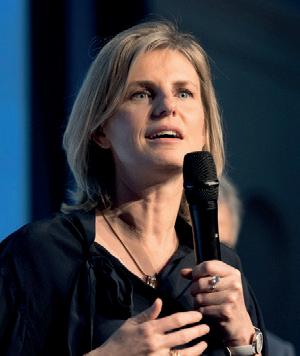

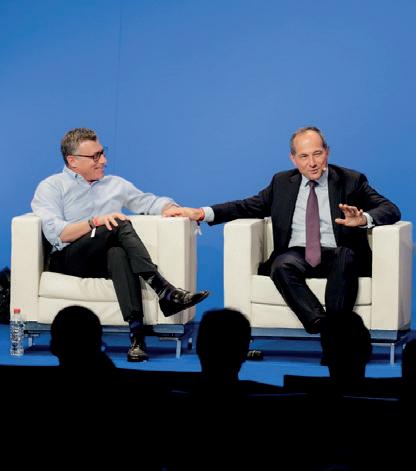

EARLY BIRD parisfintechforum.com 20% OFF until 31/03/2023 / / A COLLECTION OF EXCLUSIVE EVENTS & DIGITAL CONTENT THROUGHOUT THE YEAR DIGITAL CONTENT & PLATFORM Digital panels Online speed meeting Interview videos series Podcasts March to Dec. May 30 & 31 #PFF LEADERS SUMMIT EXCLUSIVE SIDE EVENTS Paris Fintech Night Debate & Dinner Women in Finance Lunch May / Oct. / Nov. 100 SPEAKERS 500 PARTICIPANTS 40 COUNTRIES PARIS
Real-Time Payments Drive Real-Time Economies
Modern economies are real-time
Real-time payments are at the hear t of the new global payments landscape, which is evolving rapidly Real-time transactions and grow th forecasts continue to rise globally, with emerging countries leading the way and outpacing developed nations
Real-time payments unlock economic growth
By allowing for the transfer of money bet ween businesses and consumers within seconds rather than days, real-time payments improve overall market ef ficiencies in the economy Real-time payments improve liquidit y in the financial system and therefore act as a catalyst for economic grow th. This is especially impor tant for our fast-paced and digital-led gig economies
Consumers expect real-time payments Cloud accelerates banking modernization
Banks are reinventing their mission-critical operating systems to compete in the new real-time, post-digital, cloudfirst and data-centric business environment The financial ser vices industr y has moved beyond the tipping point of broad-based disruption and is now witnessing the realization of those changing paradigms.
Formal GDP facilitated by real-time payments across 30 markets in the Cebr Economic
20%
By 2026 real-time payments are set to be at the hear t of the new global payments landscape, accounting for a quar ter of all electronic payments globally 0%
30% 2026 2025 2024 2023 202 2 2021 2020 2019 2018 2017 2016 2015
10%
56.8%
1 2 3 4 118.3B 48.6B 18 5B 9 7B 8 7B 7 4B
25 6% (where IP share of all electronic payments is at least 10%) Brazil Oman India
Philippines
31.7%
Discover more about innovating with real-time payments at aciworldwide.com
26.9%
Real-time payments are of fering consumers and businesses cheaper, faster and more ef ficient ways to pay. Payments are increasingly becoming embedded into non-financial digital apps and ser vices, with today’s customers looking for a hyper-connected, frictionless customer experience. There were real-time payments made globally in 2021 That ’s year-on-year grow th of 6 4 5% India led the way for real-time payment transaction volumes in 2021 India China Thailand Brazil South Korea
33.5%
Malaysia
CAGR (IP Volume, 2021-26) CAGR (IP Volume, 2021-26) CAGR (IP Volume, 2021-26) CAGR (IP Volume, 2021-26) CAGR (IP Volume, 2021-26)
real-time
t: Real-time payments help to generate additional economic output. 10.35B That is equivalent to the output of jobs 2021 2026 (forecast) $173B $78.4B
Top-five fastest-growing
markets:
Impact Repor
41.0%
Prime Time for Real-Time 2022 tracks real-time payment volumes and growth forecasts across 53 countries and provides an economic impact study for 30 key global markets. The move towards real-time payments is unstoppable, and financial organizations that enable them are at the heart of modern economies. It is undeniably Prime Time for Real-Time.
© Copyright ACI Worldwide, Inc. 2022






















































































 Gary Collier Gary Collier CTO of Man Alpha CTO of Man Alpha Technology Man Group Man Group
Rafa Lopez-Espinosa Rafa Lopez-Espinosa COO of International COO of International Business Business Point 72 Point
Romain Boscher Romain Boscher Chairman of the Board, Chairman of the Board, Senior Advisor Senior Advisor Fidelity Investments Fidelity Investments
Cathy Gibson Cathy Gibson Global Head of Trading Global Head of Trading Ninety One Ninety One
Jane Buchan Jane CEO CEO Martlet Asset Martlet Asset Management Management
George Patterson George Patterson Chief Investment Officer Chief Investment Officer PGIM Quantitative PGIM Quantitative Solutions Solutions
Yannig Loyer Yannig Global Head of Trading Global Head of Trading AXA Investment AXA Investment Managers Managers
Marc Wyatt Marc Wyatt Global Head of Trading Global Head of Trading T. Rowe Price T. Rowe Price
Alison Hollingshead Hollingshead COO of Investments COO of Jupiter Asset Jupiter Asset Management Management
Mike Steliaros Mike Global Head of Equity Global Head of Equity Portfolio Engineering Portfolio Engineering and Trading and Trading ADIA ADIA
Shamik Dhar Shamik Dhar Chief Economist Chief BNY Mellon Investment BNY Mellon Investment Management Management
Jon Glennie Jon CTO of Trading CTO of Trading Technologies Technologies JP Morgan Asset JP Morgan Asset Management Management
Palais des Congrès de Paris Palais des Congrès de Paris
Gary Collier Gary Collier CTO of Man Alpha CTO of Man Alpha Technology Man Group Man Group
Rafa Lopez-Espinosa Rafa Lopez-Espinosa COO of International COO of International Business Business Point 72 Point
Romain Boscher Romain Boscher Chairman of the Board, Chairman of the Board, Senior Advisor Senior Advisor Fidelity Investments Fidelity Investments
Cathy Gibson Cathy Gibson Global Head of Trading Global Head of Trading Ninety One Ninety One
Jane Buchan Jane CEO CEO Martlet Asset Martlet Asset Management Management
George Patterson George Patterson Chief Investment Officer Chief Investment Officer PGIM Quantitative PGIM Quantitative Solutions Solutions
Yannig Loyer Yannig Global Head of Trading Global Head of Trading AXA Investment AXA Investment Managers Managers
Marc Wyatt Marc Wyatt Global Head of Trading Global Head of Trading T. Rowe Price T. Rowe Price
Alison Hollingshead Hollingshead COO of Investments COO of Jupiter Asset Jupiter Asset Management Management
Mike Steliaros Mike Global Head of Equity Global Head of Equity Portfolio Engineering Portfolio Engineering and Trading and Trading ADIA ADIA
Shamik Dhar Shamik Dhar Chief Economist Chief BNY Mellon Investment BNY Mellon Investment Management Management
Jon Glennie Jon CTO of Trading CTO of Trading Technologies Technologies JP Morgan Asset JP Morgan Asset Management Management
Palais des Congrès de Paris Palais des Congrès de Paris


































































































































































































 Ingmar Stupp, Founder of Tilta, Simon Hammerschmidt, Global Head of Strategic Partnerships at Mambu and Karen Mae Ching from AWS share their thoughts
Ingmar Stupp, Founder of Tilta, Simon Hammerschmidt, Global Head of Strategic Partnerships at Mambu and Karen Mae Ching from AWS share their thoughts



























































































